I've picked the best noise cancelling headphones for all budgets, based on real-world testing of nearly 20 models
Tune in (and tune out) with the best noise cancelling headphones
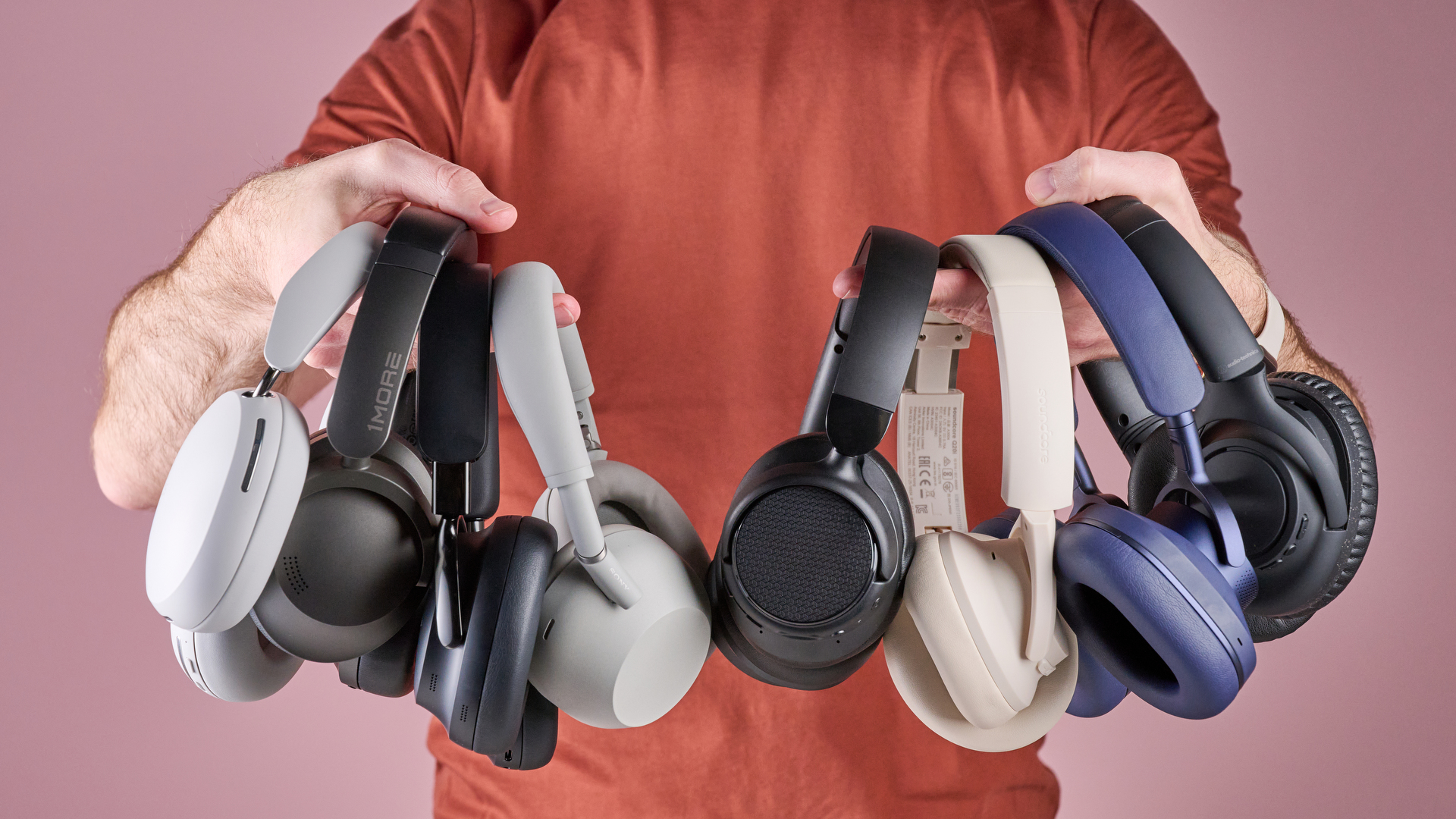
Welcome to TechRadar's guide to the best noise-cancelling headphones. Since you've come to this specific page, I'm going to assume that your biggest priority for your next headphones is their ability to block outside noise the most effectively using active noise cancellation (ANC) – so good news, that's exactly what I've tested here, along with essentials such as sound quality, battery life, smart features and comfort levels.
At a glance: the best noise-cancelling headphones:
- My #1 pick: Bose QuietComfort Ultra Headphones | See today's best price
- Best under $220 / £200: Bose QuietComfort Headphones | See today's best price
- Best under $100 / £100: 1More SonoFlow Pro HQ51 | See today's best price
- Best under $50 / £50: Amazon Basics Hybrid Active Noise Cancelling Headphones | See today's best prices
We've tested hundreds of pairs of noise-cancelling headphones here at TechRadar, so I've whittled the list down to 17 pairs of headphones, ranging in price from over $400 / £400 down to around $30 / £30. These are the models most likely to be worth buying for their respective prices, so I compared them all against each other in tough real-world noise-cancellation tests.
I chose these tests to be consistent, but to still really help me see how well these headphones work for how you'll use them at home, not how well they perform in a lab. You can read my explanation of the tests here.
One thing to note about prices in this guide: I'm going to discuss both official prices and the real-world prices you should aim to pay, which I call the 'target' price – I'm mainly judging these headphones on their target prices, as there's no point giving you buying advice for a pair of Sony WH-1000XM4 headphones at their official price of $349 when they regularly drop to $220 or lower. My target prices will be be based on price drops we've actually seen in the past, so they're real-world guidance.
I'll start with a quick run-through of the products I rate the highest at different price tiers, but read on for more depth on why I've chosen them – and later, I'll dig deeper into the features of each product I recommend (as well as the best alternatives).
My history as an audio reviewer
Why you can trust TechRadar

I lead TechRadar's audiovisual channels, home to our TV, home theater, headphones and hi-fi articles, and manage our team of editors and writers who produce those articles. I've been with TechRadar since 2022 (though it's my second stint here, having worked on it in 2009), and before that I managed the AV and home technology channels of our sister website, T3.com. Before that, I ran T3 magazine. I've worked in technology publishing since 2009.
↓ Read more
I started testing and reviewing audio products in 2011, and at that time I was focused mostly on iPod/iPhone dock speakers and wired earbuds. In that time, I've seen the world of wireless headphones and speakers completely take over mainstream audio.
That takeover includes the rise of the first mainstream wireless noise-cancelling headphones from the likes of Bose and Sony in 2016. (Is it just me or does it feel strange that wireless ANC headphones arrived the same year as AirPods?)
I've tested a huge range of headphones of all kinds over the year, including a vast range of noise-cancelling models, ranging from the cheap options you find on Amazon, up to super-elite models from Dali, Bowers & Wilkins and Bang & Olufsen.
☑️ More than 2,400 audio products reviewed
☑️ 15 years of product testing
☑️ Over 16,000 products reviewed in total
☑️ Nearly 200,000 hours testing tech
I led the development of TechRadar's process for testing headphones, including our headphones testing track list. When writing this guide, I expanded on the testing we've already done with a new set of specific noise-cancellations tests, based on my decade of experience testing these types of products.
You can read more about these tests later, but to arrive at the recommendations in this guide I performed new real-world testing and direct comparison of the headphones we identified as the best candidates. I had them all in one place, I connected them all to my phones, I swapped between them, and made frantic notes and rankings, then I changed those rankings, then I checked the headphones some more and changed the rankings again.
Oh, and if you're thinking that trying to have around 20 pairs of headphones all paired to your phone at once sounds like a recipe for chaos and frustration, you are right.
My #1 pick to buy today
Bose QuietComfort Ultra Headphones (1st Gen)
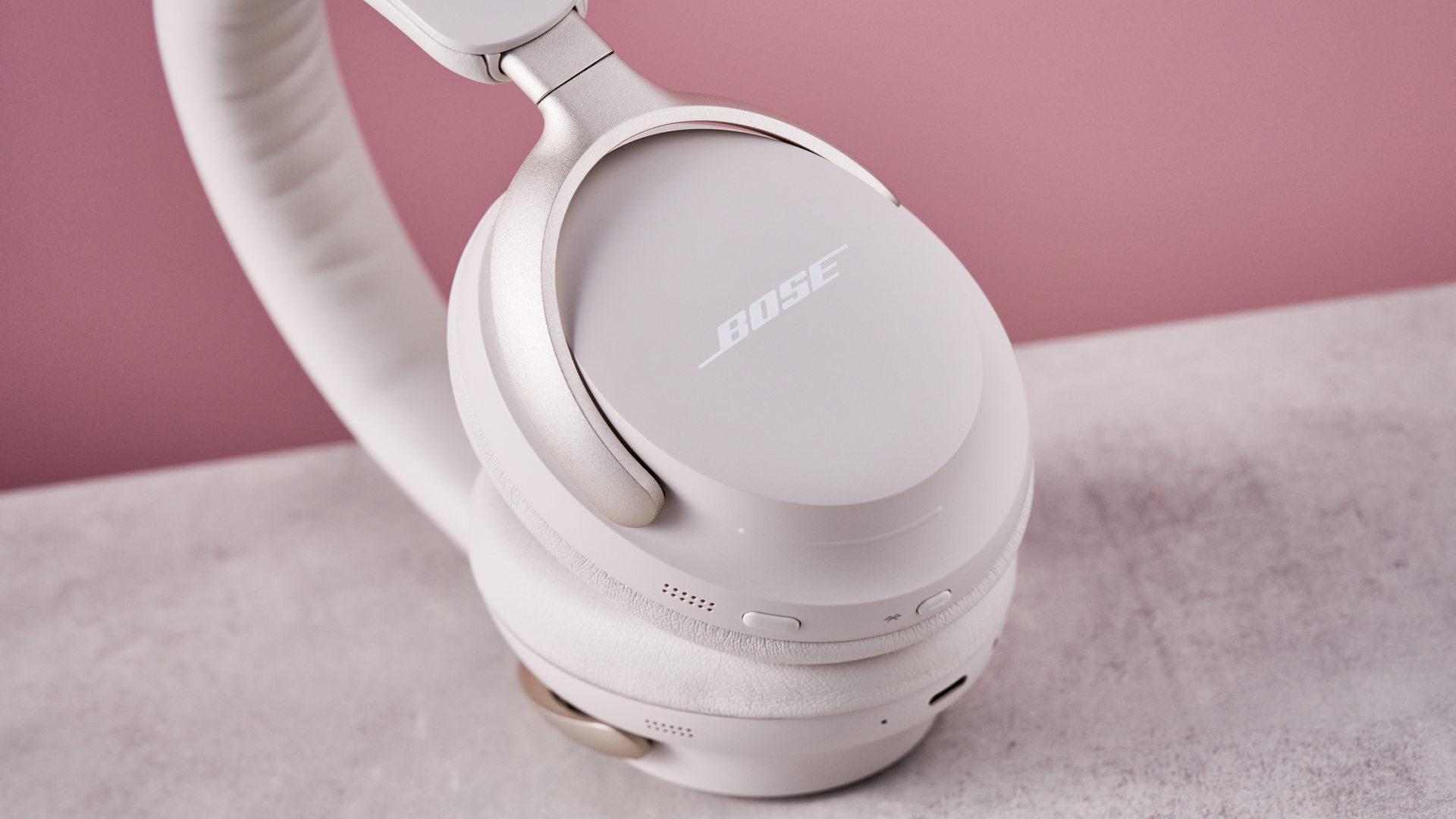
The 3 key reasons why
✅ Noise cancellation as good as anything else, but cheaper
These scored joint-top in my noise-cancellation tests, matching the Bose Ultra 2nd Gen and marginally beating the Sony WH-1000XM6, but can be found for around $100 less than those models.
✅ Comfortable and portable
I love the design of the Bose Ultras. They're very light, you can wear them for long periods without any fatigue, and they fold down small for travel.
✅ Fun and energetic sound
These give you really punchy and dynamic audio, with big (but not overly heavy) bass, zinging treble, and great clarity through the mid-range. I've loved the sound since their launch.
2 reasons to choose something else
❌ The battery life isn't great
The 24-hour battery life is below average. If you want 30 hours, the Sony WH-1000XM6 or Bose QuietComfort Ultra 2nd Gen will give this to you with the same level of noise cancellation.
❌ You want a more refined sound
The Sony WH-1000XM6 offer a little more detail, a balance of bass/mid/treble that's closer to 'neutral', and a little better cohesion from bass through to mids.
See today's best prices for the alternatives:
Sony WH-1000XM6: today's best deal
Bose QuietComfort Ultra Headphones 2nd Gen: today's best deal
The best noise cancelling headphones I tested for different budgets

The best under $250
I rated the noise cancellation of these headphones as being just a couple of points short of the Bose Ultras, but they can be found regularly for almost half the price. The sound quality isn't as good as that of their big brother, but the ANC and the comfort are best-in-class.
The best alternative:
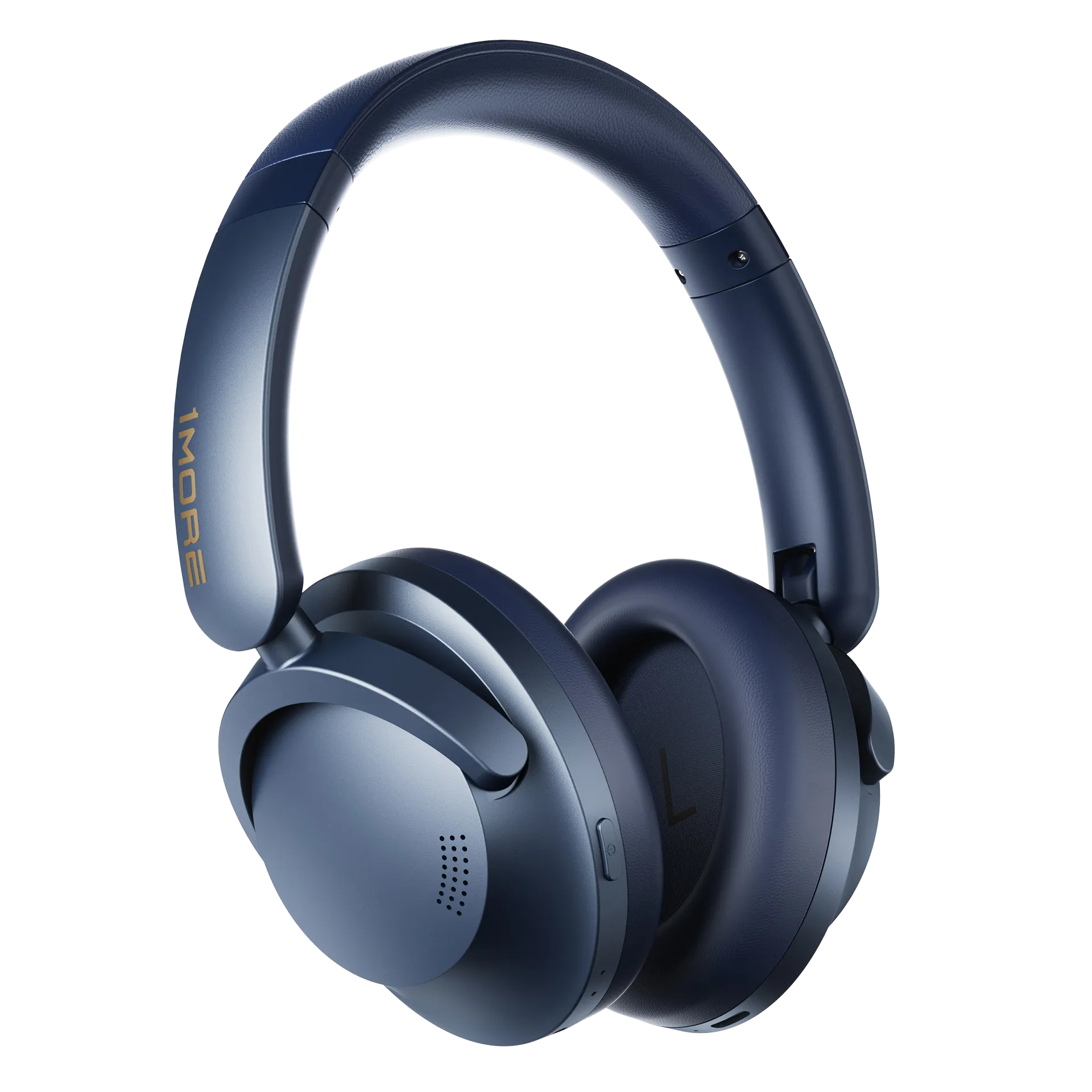
The best under $100
These are so strong, I don't even have an alternative to suggest – they're by far the best budget noise-cancelling headphones. I scored them as being basically as strong as the Sony WH-1000XM4, which cost two to three times as much. The sound quality is less refined, but it's great for the price – and they're comfortable, and the 65-hour battery life is as good as it gets.
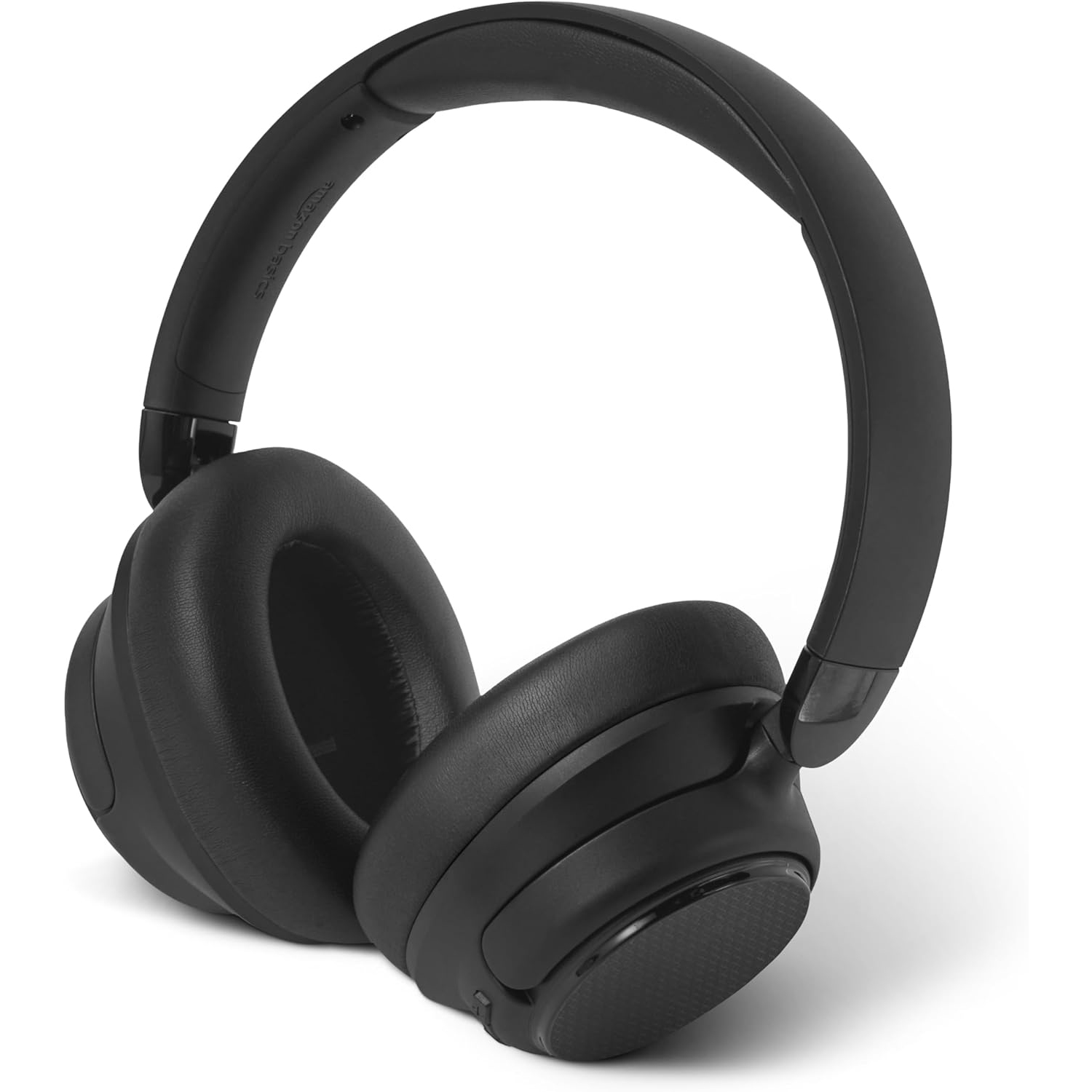
The best under $50
These are a step down in ANC power from the 1More headphones, but can be found for half the price, and really impressed me. They're solid with music, but weaker for podcasts or audiobooks – the 1More are better for that, or the Soundcore Q30 are better at the same price.
The best alternative:
The headphones I tested for this guide

Here's the list of headphones I was testing directly against each other to settle on my recommendations for this guide:
Model | Target price | List price | Battery life (ANC on) | Weight |
|---|---|---|---|---|
1More Sonoflow HQ51 | $69 / £69 | $89 / £89 | 65 hours | 246g |
Amazon Basics Hybrid Noise Cancelling Headphones | $37 / £29 | $42 / £31 | 45 hours | 260g |
Apple AirPods Max | $429 / £450 | $549 / £499 | 20 hours | 386g |
Audio-Technica ATH-S300BT | $99 / £95 | $149 / £99 | 60 hours | 258g |
Bose QuietComfort Headphones | $199 / £210 | $349 / £299 | 24 hours | 240g |
Bose QuietComfort Ultra Headphones | $329 / £299 | $429 / £449 | 24 hours | 250g |
Bose QuietComfort Ultra Headphones (2nd Gen) | $449 / £449 | $449 / £449 | 30 hours | 250g |
Cambridge Audio P100 SE | $279 / £249 | $299 / £249 | 60 hours | 330g |
Nothing Headphone (1) | $254 / £199 | $299 / £299 | 35 hours | 329g |
Runolim WH301A | $19 / £23 | $23 / £29 | 40 hours | 230g |
Sennheiser Accentum Plus | $170 / £119 | $249 / £199 | 50 hours | 227g |
Sonos Ace | $299 / £269 | $399 / £399 | 30 hours | 312g |
Sony WH-1000XM4 | $199 / £179 | $349 / £349 | 30 hours | 254g |
Sony WH-1000XM5 | $249 / £219 | $399 / £379 | 30 hours | 250g |
Sony WH-1000XM6 | $428 / £375 | $449 / £399 | 30 hours | 254g |
Soundcore Q20i | $39 / £32 | $69 / £49 | 40 hours | 245g |
Soundcore Q30 | $53 / £53 | $79 / £79 | 40 hours | 260g |
Why only these headphones?
Obviously, there are a lot more headphones than these in the world – and not only that, there are a lot of good headphones that are not in this list. There are even entries in our list of the best headphones that have active noise noise cancellation, but that I didn't put through this testing process.
↓ Read more
Why? Well, I knew based on the testing we've done on those headphones before that they wouldn't actually win in a battle that focuses on noise-blocking power first and foremost, and I only had so much time I could spend testing.
Take the Bowers & Wilkins PX7 S3, for example. They're five-star headphones, and are excellent – but I've compared them to the similarly priced options from Bose, Sony and Sonos before, and I know that their noise cancellation is a clear level below.
I focused on choosing the most likely candidates for delivering strong ANC results across different pricing bands, from the premium of the Sony WH-1000XM6 down to the tiny price of the Runolim WH301A, ensuring that we had several options competing at the same price level.
This not only helps me to ensure that I'm only picking the ones that stand out among their peers, but also means I was doing direct comparisons between any cheaper models that punch above their weight and the models just above, for a complete picture of where the best value can be found.
How I tested the best noise cancelling headphones
There's obviously a lot to test in these noise-cancelling headphones, from sound quality to smart features to how comfortable they are to wear – but the most important thing is their active noise-cancellation power.
I decided that I wanted to test in real-world conditions, which means I'm not taking scientific measurements of the levels of noise reduction here, based on artificially created sound from a speaker.
While that kind of test is obviously a good way to measure with absolute consistency, it doesn't reflect well the nuances of how well noise is cancelled in practical use, because there are multiple factors involved.
For example, I tested two pairs of Soundcore headphones while compiling this guide, and the noise cancellation power was very similar on them both – this applied with no sound coming through, and when listening to music that covers a wide range of frequencies.
However, when listening to a podcast, one was much weaker, because its mid-range reproduction wasn't as strong as the other pair, so voices sounded more muted and were much harder to make out over the background sounds. There was similar noise reduction in most cases, but a clear difference in how well you could make out what you were listening to.
But I still wanted to create some consistent testing conditions so that I could fairly compare all the headphones to each other for noise cancellation, and dig into where their strengths and weaknesses are.
↓ Read more
So TechRadar's audio team came up with the idea of four noise-cancellation tests. Two of them target droning noises (which are easier for ANC headphones to deal with), while two target chaotic and unpredictable noises (which are harder to cancel out).
Similar, two of the tests target higher-pitched noises (harder for ANC headphones to deal with), and two target lower-frequency noises (easier to deal with).
Here are the four tests I did, all using real-world sound. In all cases, I tested all the different pairs of headphones in one big session, switching back and forth between them, making direct comparisons and ranking them.
| Row 0 - Cell 0 | Droning sound | Chaotic sound |
Higher frequency | Hair dryer | Café |
Lower frequency | Microwave | Road traffic |
Hair dryer
I placed a hair dryer on a table on full power (with no heating – I'm not made of money), facing me. I measured 2m away from it, and marked the floor. I faced the hair dryer directly while testing each pair of headphones.
Microwave
I took over the office microwave for several hours (I am not kidding, that's exactly what I did) and marked the floor 1m away from it, and tested the headphones facing it directly. I had the microwave on full power, normal microwave use, for short periods at a time so I could listen to the headphones.
Café
I set myself up on a table in a busy city-center chain café for a few hours over lunch. The noise of the espresso machines, the clinking of cups and cutlery, and the chatter all combine into a cacophony of higher-pitched sound that rises and falls, and has sudden sharp peaks. This is basically the toughest kind of sound for ANC headphones to deal with.
Road traffic
While road traffic certainly can produce higher-pitched sounds, the rumble of engines and friction of tires tends more towards the mid- to lower-frequency range. I stood on the side of a busy intersection with traffic going in three directions, testing all the headphones one after the other. This is easier than the café test, but can still easily overwhelm the podcast, and will be quite audibly over the music on weaker headphones.
How I make my comparisons
When comparing headphones, I try them with nothing playing just as a bit of a base line, then I try them with music playing, then I try them with a podcast playing to see if I can easily make out what's being said.
For consistency, I use the same piece of music: Let It Happen by Tame Impala, from 1:45 on. I found this to be a good balance drowning out noise, because it has a consistent melange of sound across a wide frequency range, but with just enough space among the sound for audio to leak through, if it's going to.
I also use the same podcast episode – an episode of The Eye of the Duck, with two men with fairly lower-frequency voices, which can be easily overwhelmed by higher-frequency outside sounds leaking in, so this is providing the toughest test.
The audio is played from my iPhone 16 Pro to the headphones – this means that some of them are playing in limited standard Bluetooth quality rather than the higher quality they're capable of over aptX or LDAC, but again this is important for consistency. They all get the same input, which make it easier to compare the output.
Volume levels are also important when it comes to noise cancellation, of course – the louder the better for drowning something out. But that's not good for your hearing, and doesn't tell me too much about how well the sound is being actively cancelled, so I stick with a reasonable real-word listening volume.
This is where it gets hard to be truly consistent: I have to just estimate the volume as being equivalent between the different headphones. I can't just set my iPhone volume to 35% and say that's the right level, because that 35% means very different levels of actual volume depending on the headphones. I've been reviewing audio gear professionally since 2011, so I'm confident in my ability to equalize the volume suitably, but you should know that this is the biggest variable.
Testing the rest of the headphones' skills
I've made noise cancellation the dominant factor in this guide, but obviously it's not the only thing we test for. Sound quality is a significant factor, as is comfort for long sessions while traveling or working.
I take battery life into account, and any key features that make a pair of headphones easier to use, or generally more useful, in the long term.
I'm also looking at build quality and how easy the controls are to find and use – and while nice aesthetics don't make or break my picks, it's nice for things to look nice.
The test scores of these headphones
After completing the testing described above, I ranked the headphones from best to weakest in each individual test, and assigned a score out of 5 to each (including half marks).
I didn't just go with a system of '5 for the best one, 1 for the worst one' – I started with 5 for the best one, and then dropped a mark or half a mark whenever there was an obvious step down in effectiveness between models. This means that in some cases, no headphones scored right at the bottom of the scale.
First, here's a table purely of the scores I gave, including the total across all tests.
Model | Total score | Hair dryer | Microwave | Traffic | Café |
|---|---|---|---|---|---|
Bose QuietComfort Ultra Headphones (2nd Gen) | 19.5 | 4.5 | 5 | 5 | 5 |
Bose QuietComfort Ultra Headphones | 19.5 | 4.5 | 5 | 5 | 5 |
Sony WH-1000XM6 | 19 | 5 | 5 | 4.5 | 4.5 |
Sonos Ace | 18.5 | 4.5 | 4.5 | 4.5 | 5 |
Bose QuietComfort Headphones | 18 | 4.5 | 4.5 | 4.5 | 4.5 |
AirPods Max | 17.5 | 4 | 5 | 4 | 4.5 |
Sony WH-1000XM5 | 16 | 4 | 4 | 4 | 4 |
Sony WH-1000XM4 | 15.5 | 4 | 4 | 3.5 | 4 |
Cambridge Audio P100 SE | 15 | 3.5 | 3.5 | 3.5 | 4.5 |
1More Sonoflow HQ51 | 14.5 | 3.5 | 3.5 | 3.5 | 4 |
Nothing Headphone (1) | 14.5 | 3 | 4 | 3.5 | 4 |
Sennheiser Accentum Plus | 13 | 3 | 3.5 | 3 | 3.5 |
Amazon Basics | 11 | 2 | 3 | 2.5 | 3.5 |
Soundcore Q30 | 10 | 2.5 | 2 | 2.5 | 3 |
Soundcore Q20i | 10 | 2.5 | 2.5 | 2 | 3 |
Audio-Technica ATH-S300BT | 9.5 | 3 | 2.5 | 1 | 3 |
Runolim WH301A | 6.5 | 1 | 2.5 | 1 | 2 |
However, I think the Traffic and Café tests are more important than the Hair Dryer and Microwave tests, because they're more like the environments in which you'll mostly rely on ANC, and at the same time are harder tests. If you agree, then here's the same table as above, but with the Traffic and Café scores doubled when counting the total score, to increase their importance.
Model | Total score | Hair dryer | Microwave | Traffic (2x) | Café (2x) |
|---|---|---|---|---|---|
Bose QuietComfort Ultra Headphones (2nd Gen) | 29.5 | 4.5 | 5 | 5 | 5 |
Bose QuietComfort Ultra Headphones | 29.5 | 4.5 | 5 | 5 | 5 |
Sony WH-1000XM6 | 28 | 5 | 5 | 4.5 | 4.5 |
Sonos Ace | 28 | 4.5 | 4.5 | 4.5 | 5 |
Bose QuietComfort Headphones | 27 | 4.5 | 4.5 | 4.5 | 4.5 |
AirPods Max | 26 | 4 | 5 | 4 | 4.5 |
Sony WH-1000XM5 | 24 | 4 | 4 | 4 | 4 |
Sony WH-1000XM4 | 23 | 4 | 4 | 3.5 | 4 |
Cambridge Audio P100 SE | 23 | 3.5 | 3.5 | 3.5 | 4.5 |
1More Sonoflow HQ51 | 22 | 3.5 | 3.5 | 3.5 | 4 |
Nothing Headphone (1) | 22 | 3 | 4 | 3.5 | 4 |
Sennheiser Accentum Plus | 19.5 | 3 | 3.5 | 3 | 3.5 |
Amazon Basics | 17 | 2 | 3 | 2.5 | 3.5 |
Soundcore Q30 | 15.5 | 2.5 | 2 | 2.5 | 3 |
Soundcore Q20i | 15 | 2.5 | 2.5 | 2 | 3 |
Audio-Technica ATH-S300BT | 13.5 | 3 | 2.5 | 1 | 3 |
Runolim WH301A | 9.5 | 1 | 2.5 | 1 | 2 |
My list of the best noise-cancelling headphones, in-depth
The best noise cancelling headphones overall
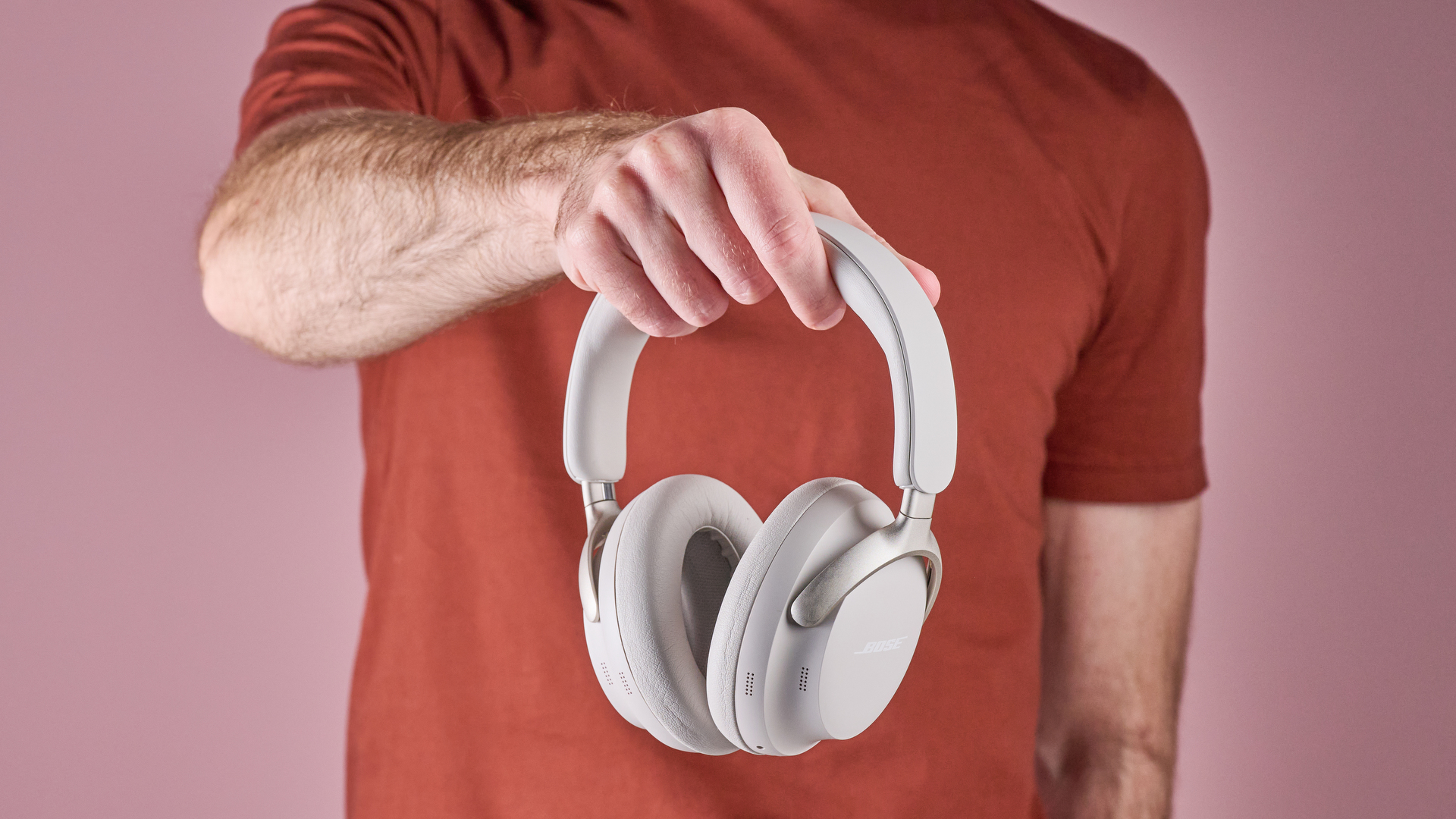
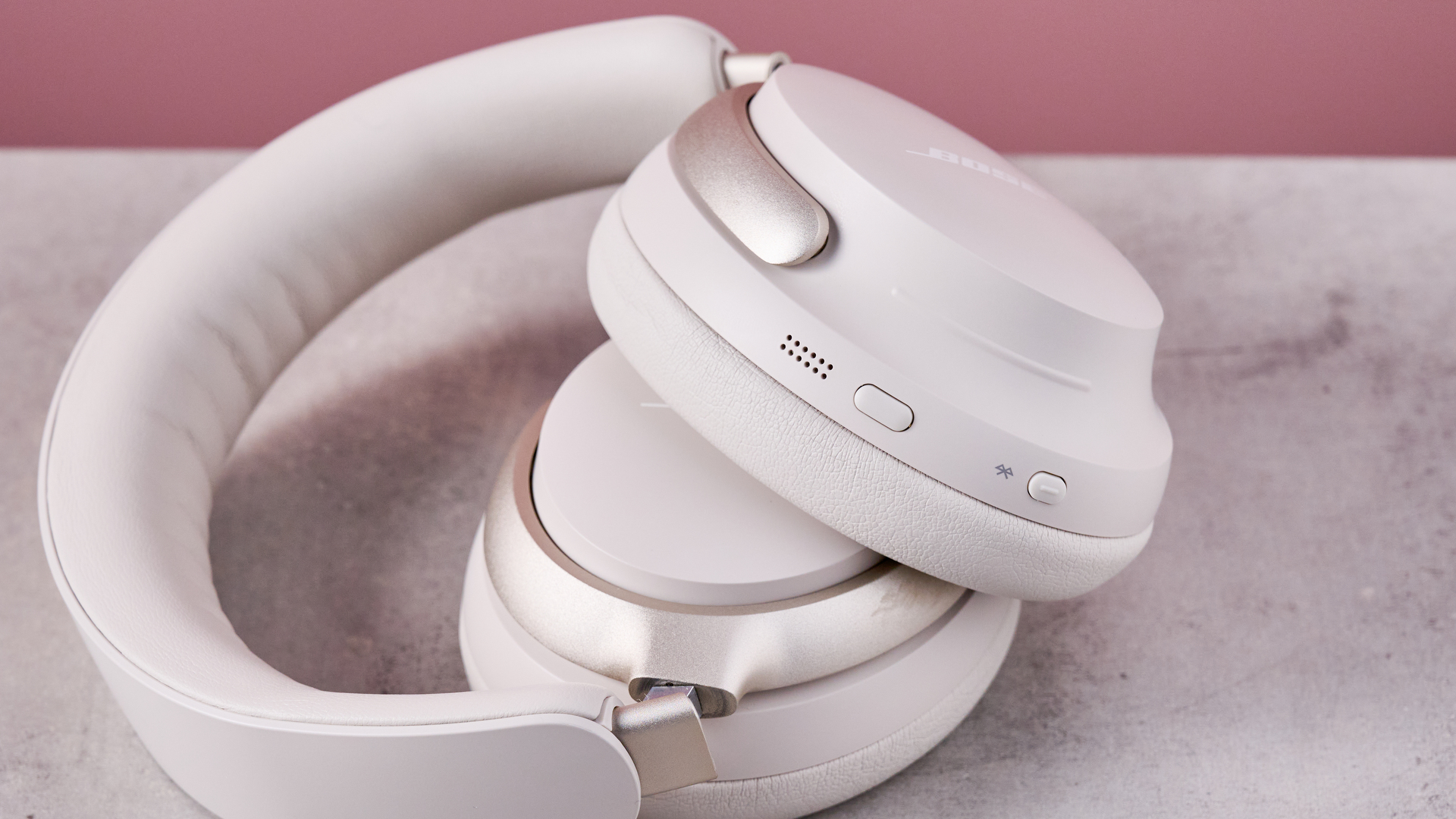
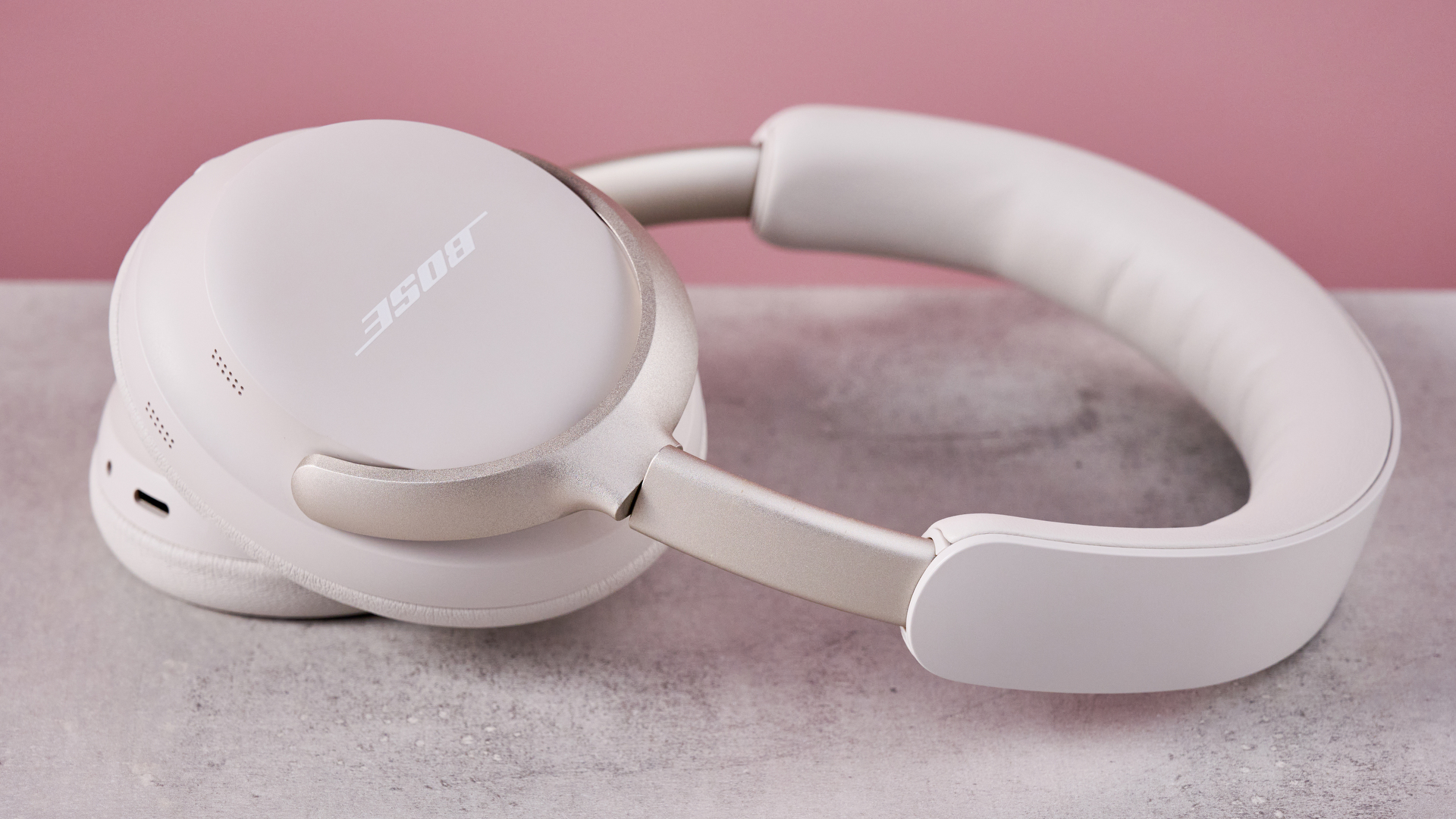
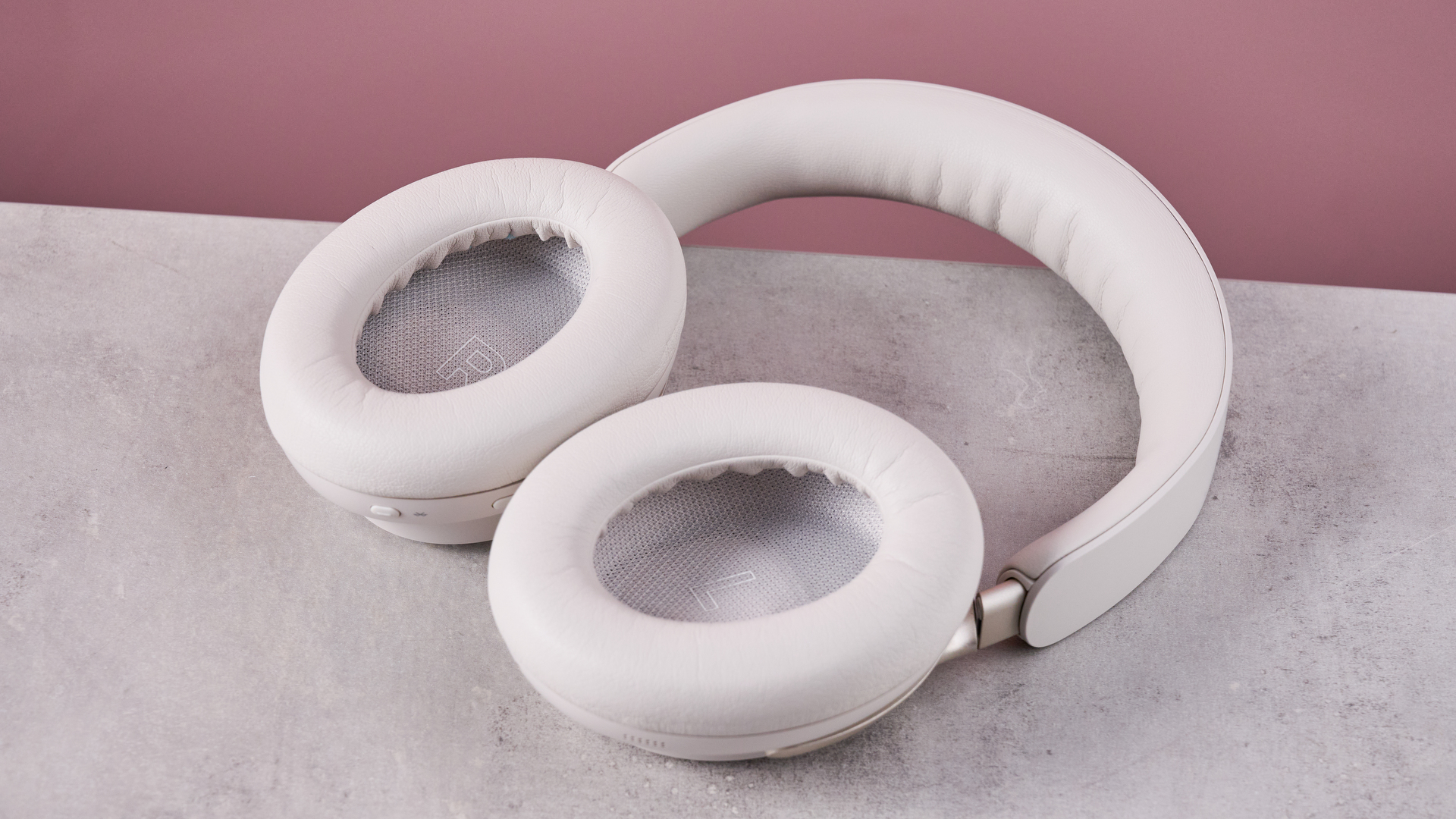

Specifications
Reasons to buy
Reasons to avoid
Let me sum this up quickly: Bose's first-gen Ultra Headphones offer noise cancellation that's basically indistinguishable from newer premium models, but can be bought for around $100 / £100 less than them. That's it, that's the tweet.
These were first released in late 2023, and since then Bose has released its own Bose QuietComfort Ultra Headphones (2nd Gen) and Sony has released the Sony WH-1000XM6, both of which should in theory overtake these the noise-cancellation stakes, being newer and fancier.
But, having compared the three extensively – swapping between them maybe ate up more time than any other testing I did – my conclusion is that they're still best-in-class for blocking noise in a meaningful sense. I think the 2nd Gen are marginally superior, but only if you spend ages looking for differences because you're writing a long guide to the best noise-cancelling headphones (for example).
As you can see in the tables above, I actually think these are even marginally better than the Sony XM6, based on superior performance for more chaotic real-world sounds, particularly with higher-frequency noises – I felt that that the Bose Ultra clamped down on sound better across all frequencies, while the Sony cans leaked in a little more hiss, although again I'm talking about very minor differences.
I love the design of the Bose Ultra too – they've very light, very comfortable for long periods, and fold up for travel use, which I always appreciate.
There are good reasons to choose the other two big competitors over the original Bose Ultra, though: the main two are battery life, and your sound profile preference.
Battery life is simple: theBose Ultra only manage 24 hours with active noise cancellation turned on, compared to 30 hours each for the Bose Ultra 2nd Gen or the Sony XM6. And let me clear: the 24 hours of the Bose is a real-world figure that I've tested – you won't secretly get more out of them.
If you're good about staying on top of charging your devices, this won't be a problem; but 30 hours leaves more margin for error, in my experience, and generally means you won't find they need charging halfway through a lengthy session of use.
The sound profile issue is more complicated. I love the sound of the Bose Ultra – they're so dynamic, they have a huge range, with every frequency well-represented and offering plenty of detail, and they're punchy and fun. But they lean on having more energy in the bass and treble, and some people prefer a sound that's a closer to neutral.
Both the Bose Ultra 2nd Gen and the Sony lean more this way – I think the Sony is the superior option when it comes to sound fidelity, especially with its tighter representation of lower mids and the detail within them, creating a slightly more cohesive soundstage than the Bose Ultra, just without the extra bass depth the Bose offer.
(Though I'll mention here that the best sound in this kind of price range is offered by the Bowers & Wilkins PX7 S3, which blows away the Sony in this regard – but the noise cancellation is far behind the three options I'm talking about, which is why I dismissed it from my testing list after early comparisons. The AirPods Max are also incredibly strong for people who like a neutral sound, and have great ANC that's a bit weaker than these in the high frequencies.)
The other reason you might choose the Sony WH-1000XM6 are the superior smart features compared to Bose's headphones. Both have a spatial audio option and the ability to customize your levels of noise cancellation, but the Sony have a few other useful options – one we particularly love in practice is the ability to just hold a hand over the earcup to active transparency mode temporarily, so you can speak to someone quickly without finding the button. And speaking of buttons, the controls are a little easier to use on the Sony, in my opinion, but Bose's are fine.
Despite all this, for me, it comes down to bang for your buck. I regularly see the Bose QuietComfort Ultra Headphones drop to around $300 / £300, and I think the huge saving of up to $150 compared to the newer models more than negates any small advantages those have. For elite noise cancellation at a reasonable price, these are my favorites after testing all the options.
The best noise cancelling headphones under $250 / £250

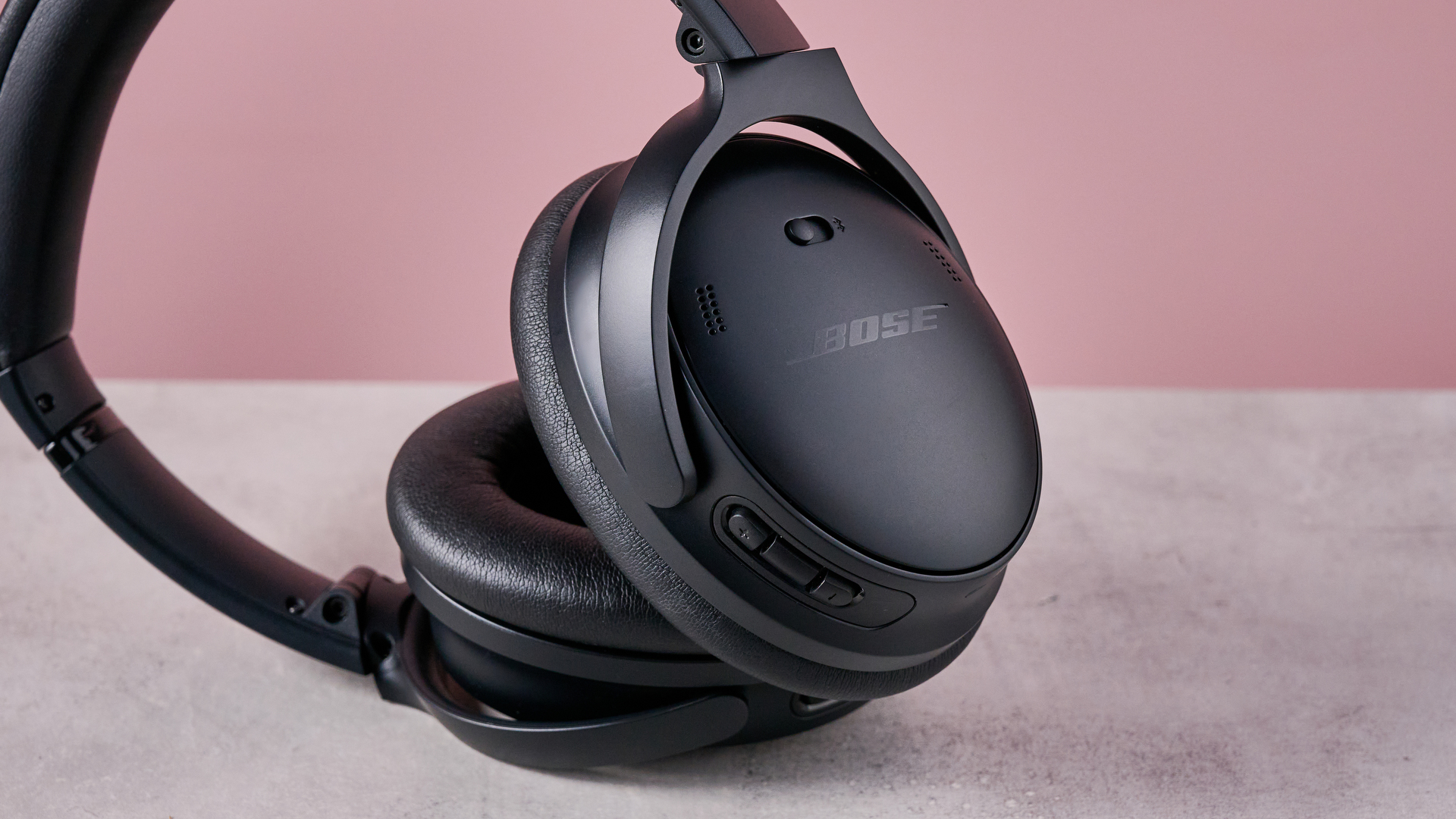

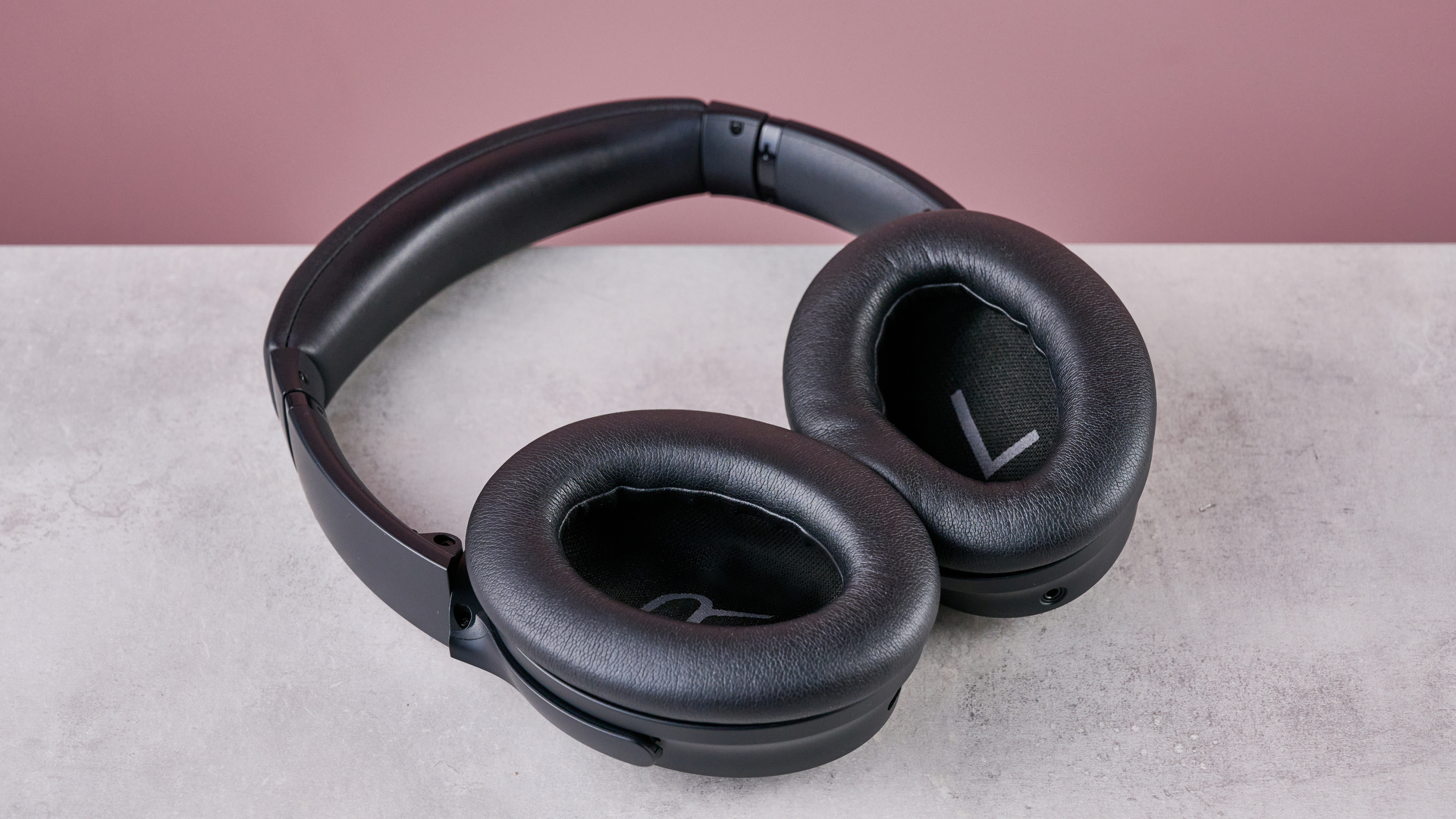
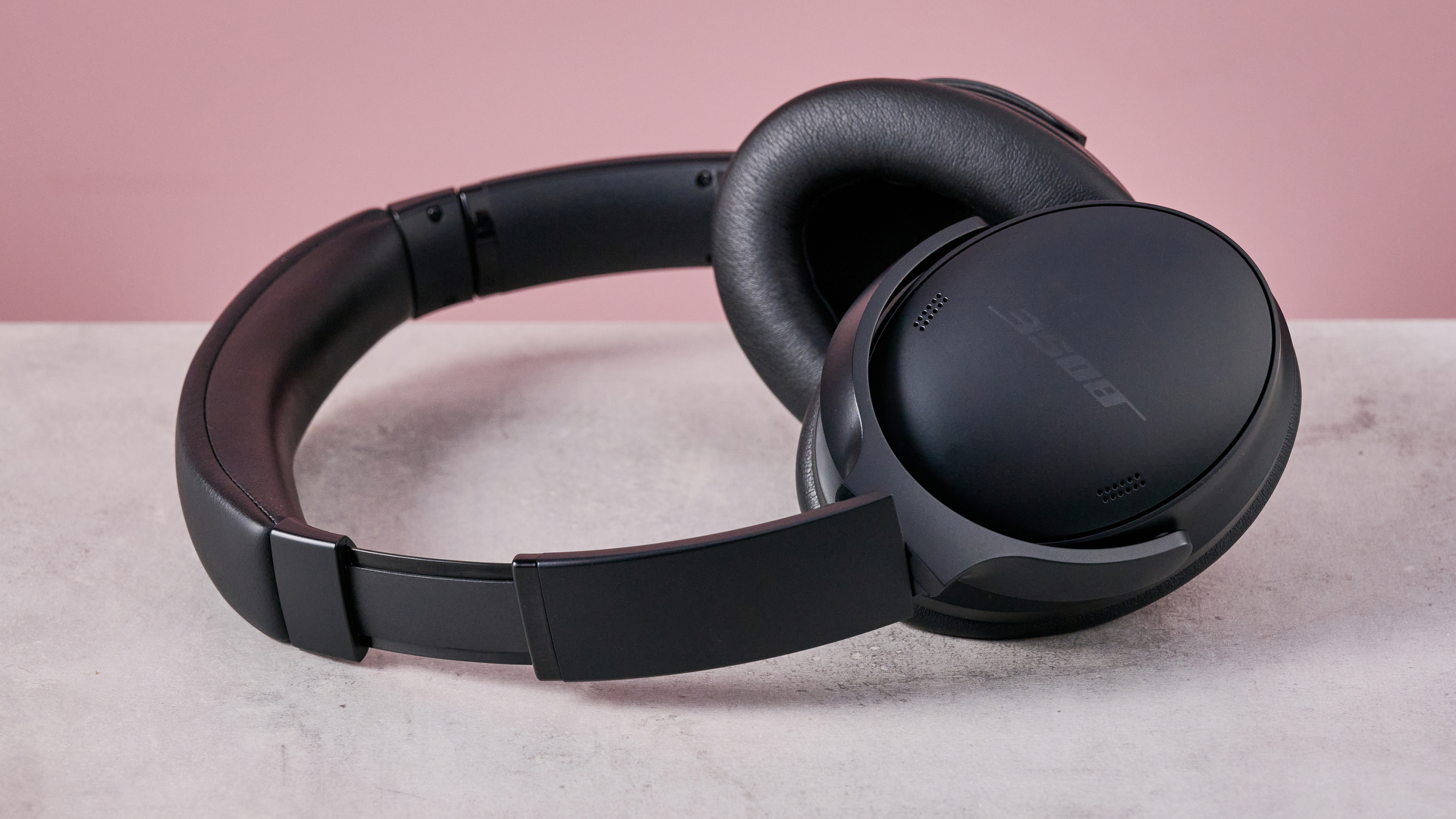
Specifications
Reasons to buy
Reasons to avoid
At full price, the Bose QuietComfort are arguably a little too expensive. But there's no reason to pay full price – having originally been released in 2023, these are now generously discounted throughout the year. I've picked them for an 'under $250' category, but I'm playing it safe there – you will almost certainly find them available for more like $200 / £200 during the sales season.
In my noise-cancellation tests, I scored these only a couple of points lower than far more expensive models, including Bose's own Ultra models, plus the Sony XM6, and the Sonos Ace. In fact, I rated them higher than the pricey AirPods Max when weighting the real-world tests higher. When it comes to the quality of noise cancellation for the price, nothing beats these – especially at a lower sale price.
These headphones pretty much match more premium headphones when it comes to noise cancellation, but it's the sound quality and the design that makes them feel like they're a step down.
They sound good, don't get me wrong – rich bass, strong detail and clear highs all stand out – but there's a thinness to the mids that betrays the fact that these aren't Bose's highest-end offering. I found that you can improve the sound noticeably by playing with the EQ settings in the app and boosting the mids just a couple of points, giving a more well-rounded soundstage. If sound is your focus at this price, I'd steer you towards the Cambridge Audio P100 SE, but their noise cancellation is a step down.
The design, again, isn't bad in any way; it's just more utilitarian than the Bose Ultra, or the Cambridge Audio P100 SE. It's got more seams, and more square edges. This leads them to be superior to fancier sets in some ways, I have to say – for example, the on/off slider is a simpler thing to deal with than a button, and makes it easy to see at a glance if you've left them on – but it still won't excite aesthetes.
Crucially, though, the Bose QuietComfort Headphones are really light and comfortable for long-term use, matching the venerable (and similarly priced) Sony WH-1000XM4 in this regard. The Cambridge P100 SE are among the heaviest here, and are 38% heavier than the Bose, and so to keep stable and comfortable they use a much stronger clamping force. Some people don't like this (and it tends to affect glasses users like me more than the non-bespectacled), though some don't mind it – I tend to think it makes them more fatiguing for long-term use (such as flights) in particular.
I also prefer headphones that fold up, which is another reason I'd lean towards the Bose or Sony over the Cambridge. And I think the Bose are probably superior to the Sony in every way, even if it's not by a huge margin in some areas. Where it counts though – the noise cancellation – they're undoubtedly better.
The clear downside to these headphones is the 24-hour battery life. Sony's XM4 give you 30 hours, while the Cambridge P100 SE offer a colossal 60 hours. So if you're forgetful when it comes to charging, these may be preferable, since you're less likely to run out of power when you're in the middle of using them.
As someone who a) prefers a lighter pair of headphones that fold up, and b) is prioritizing noise cancellation in this guide, the Bose QuietComfort Headphones beat the competition for me, though there's a chance you'll find the Sony WH-1000XM4 for less during sales events, and I'd happily recommend them if price is a deal breaker for you.
The best noise cancelling headphones under $100 / £100

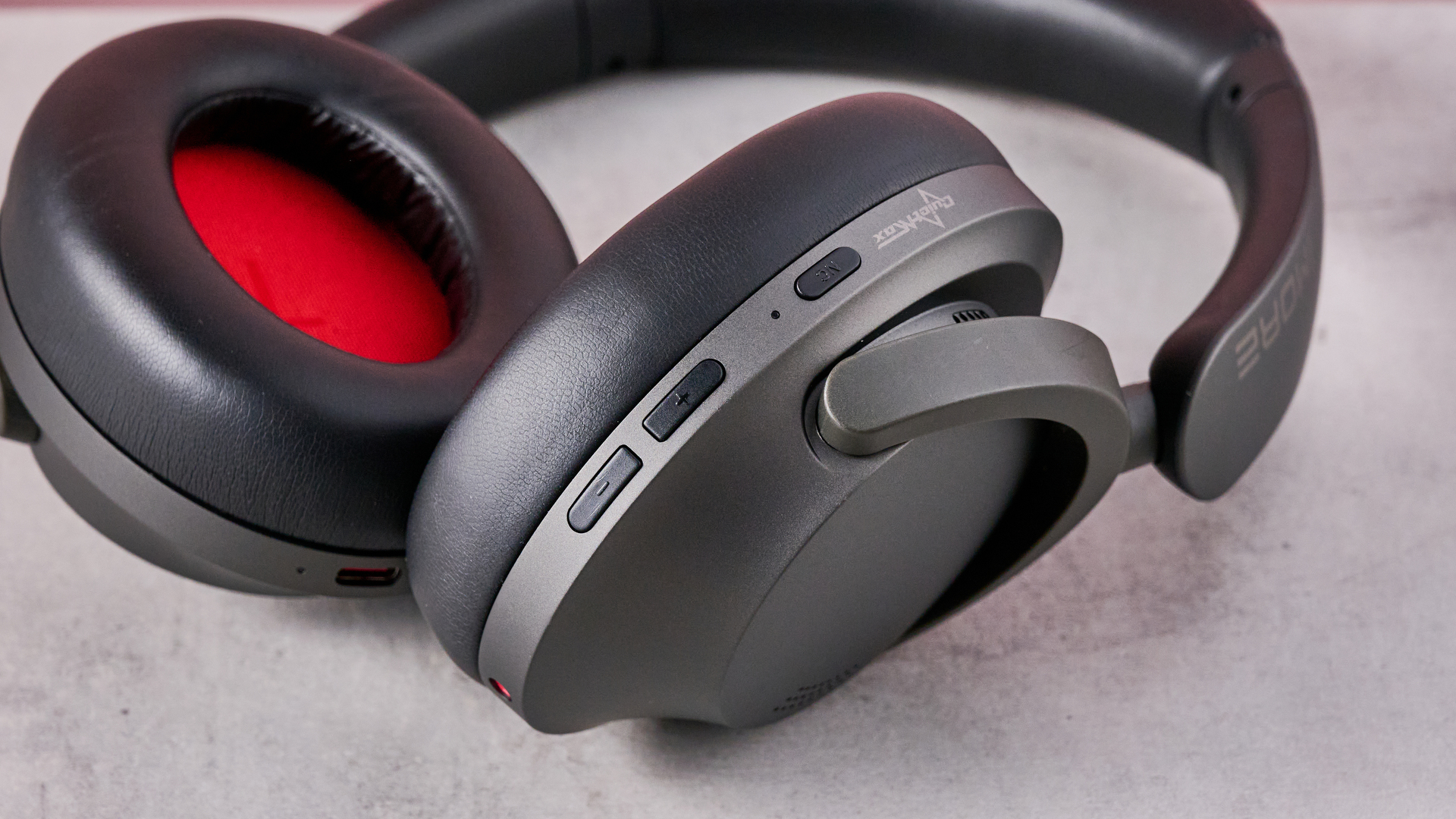
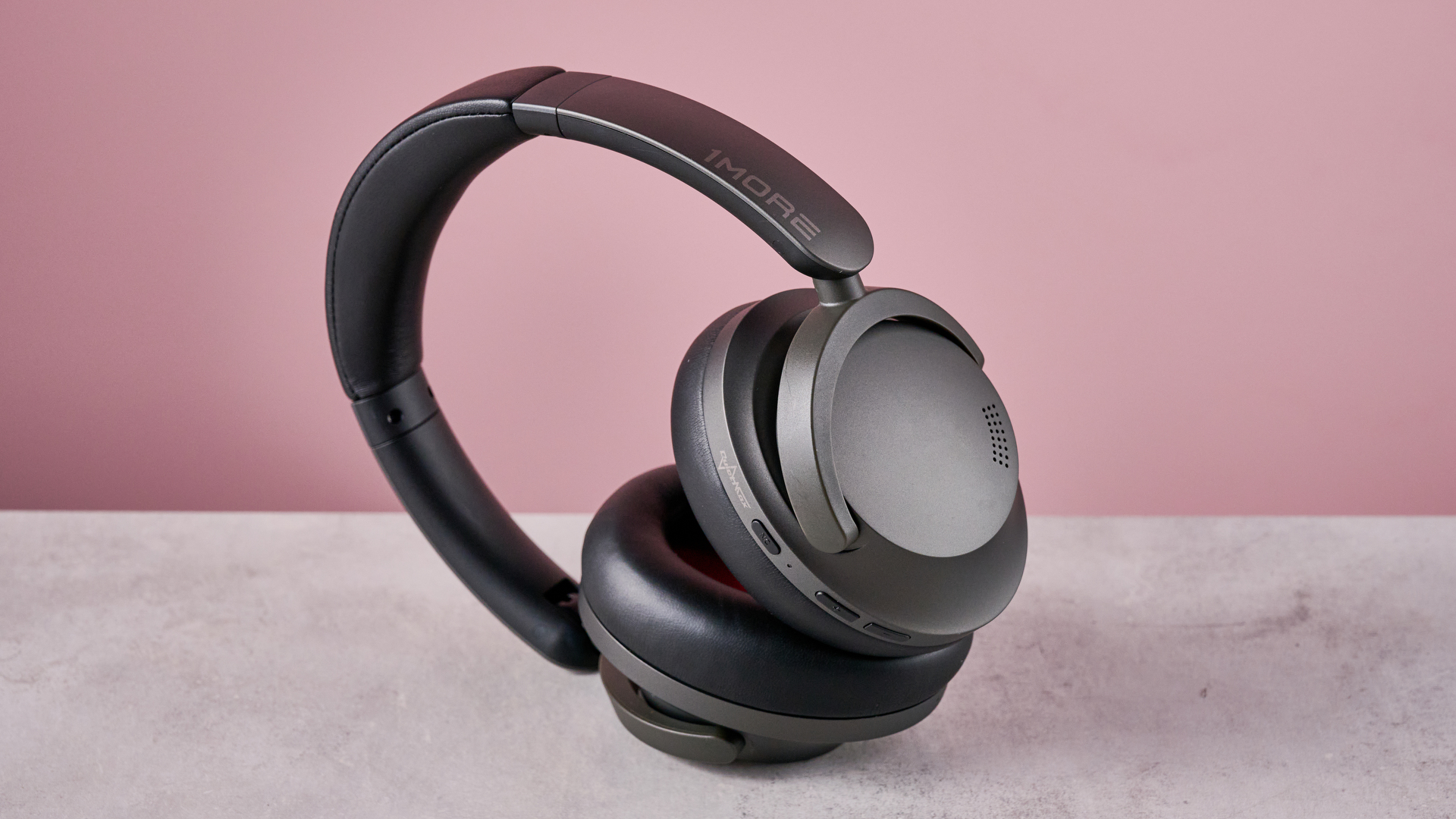
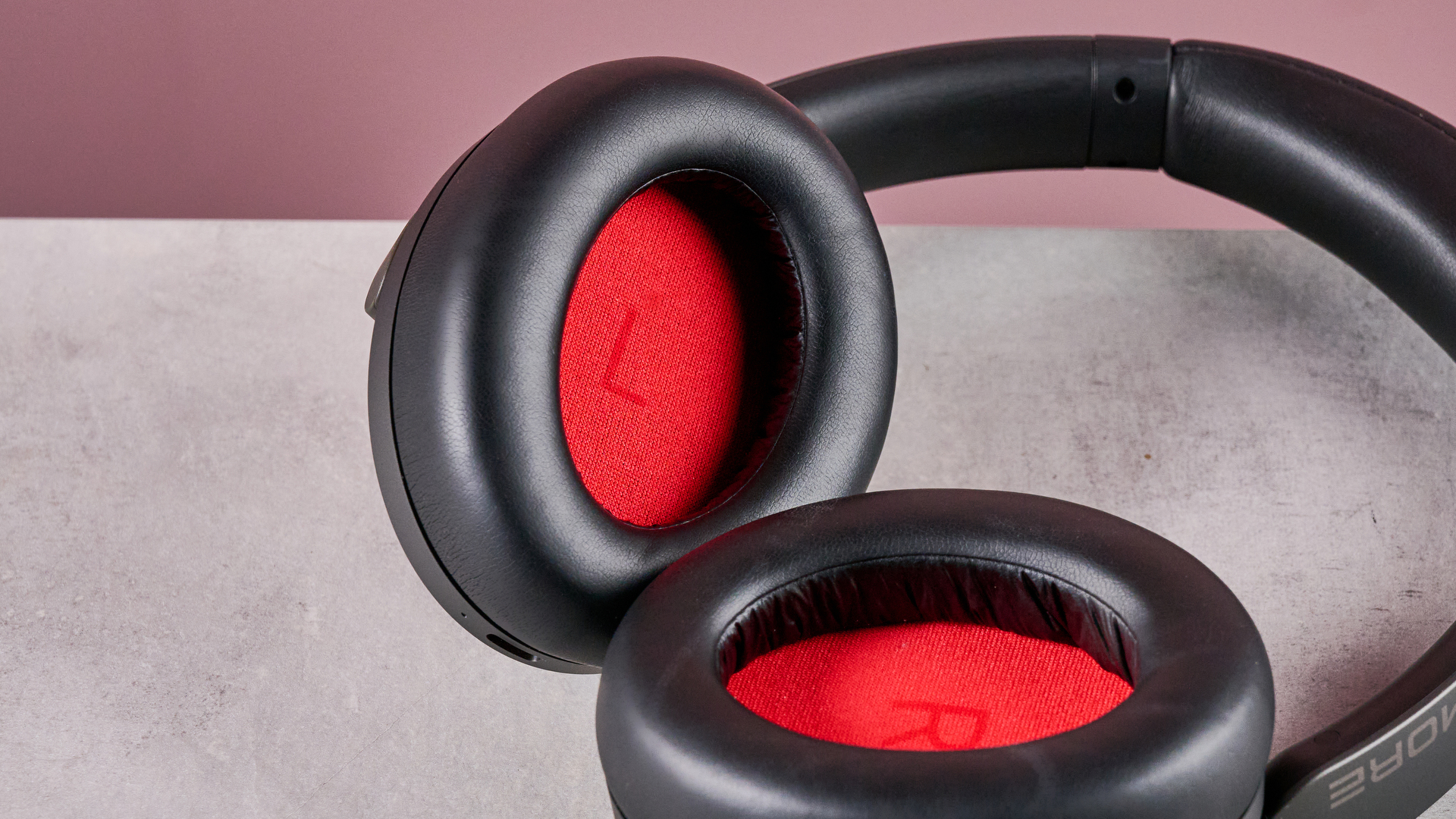
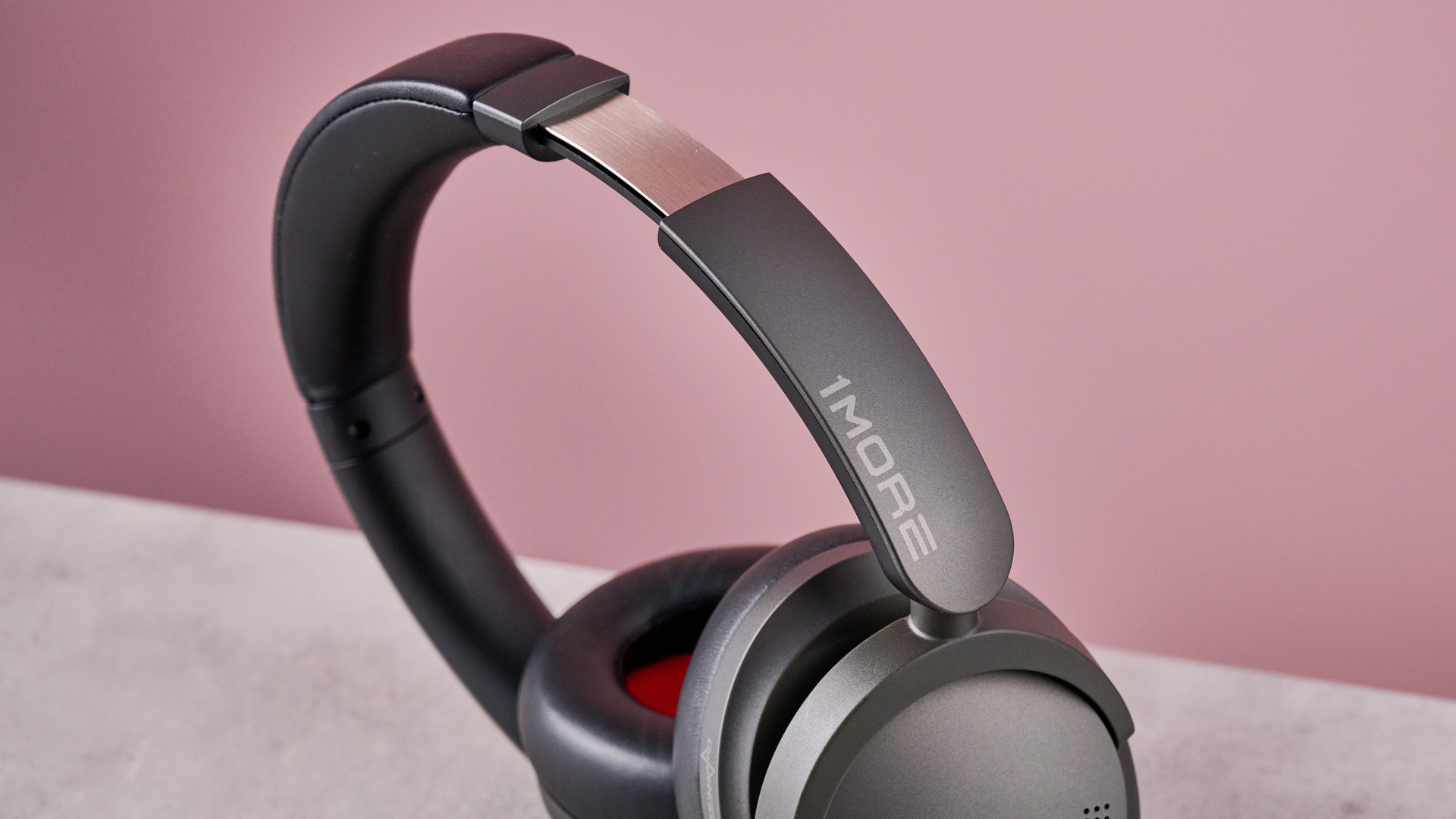
Specifications
Reasons to buy
Reasons to avoid
Having tried competitors from the likes of Sony and Soundcore, I think the 1More SonoFlow Pro HQ51 stand out – they could cost twice their price, and I'd still say they were excellent value.
The money you're spending here is all going into into the sound, both in terms of music quality and the active noise cancellation. I rated these at basically the same level of ANC power as the Sony XM4 or Cambridge Audio P100 SE, but those headphones cost more than twice as much.
What's so impressive here is how well they lock down the sounds across the whole frequency range – as noise-cancelling headphones get more budget, they tend to get weaker at blocking higher-pitched noises. That's not the case here; whatever you throw at the 1More, it's ready to respond.
Similarly, cheaper headphones are usually weaker if you're trying to listen to spoken-word content, because their mid-range is less expressive, so not only is more sound leaking in, the headphones are also less able to overcome it when the frequencies are similar. Again, that's not the case here – the mid-range is full-chested and capable of overcoming background sound without you needing to crank the volume to silly levels.
The sound is pretty bassy, but in a good way – the bass is controlled, and gives the headphones great energy. Keeping the bass in check helps that mid-range to come through fully, and despite the low price these are capable of expressing all the elements of really dense and complex tracks.
It's mostly the expansive of the soundstage here that lets you know you're listening to cheaper headphones – it's a little more compressed than better headphones, with less space between the instruments, and the feeling that the sound is coming from a set of headphones, not from the space around you. But for the price, that's absolutely normal.
It's a similar story for the design – they look fine. They feel fine. But you won't mistake them for anything premium. However, they're among the lightest pairs here, and so are very easy and comfortable to wear now matter how long you wear them for.
And that might be a long, long time because these are capable of 65 hours of continuous use with noise cancellation turned on, which is the best of any headphones here. If you like the idea of something you'll very rarely need to remember to juice up, look no further. That makes them ideal for travel, as does their folding design and case included in the box – something that gets more rare as the price drops.
While we like options such as the Soundcore Space One and Sony WH-CH720N a lot – and have slightly better apps if you're into customization – the 1More are simply a step above in terms of value.
The best noise cancelling headphones under $50 / £50

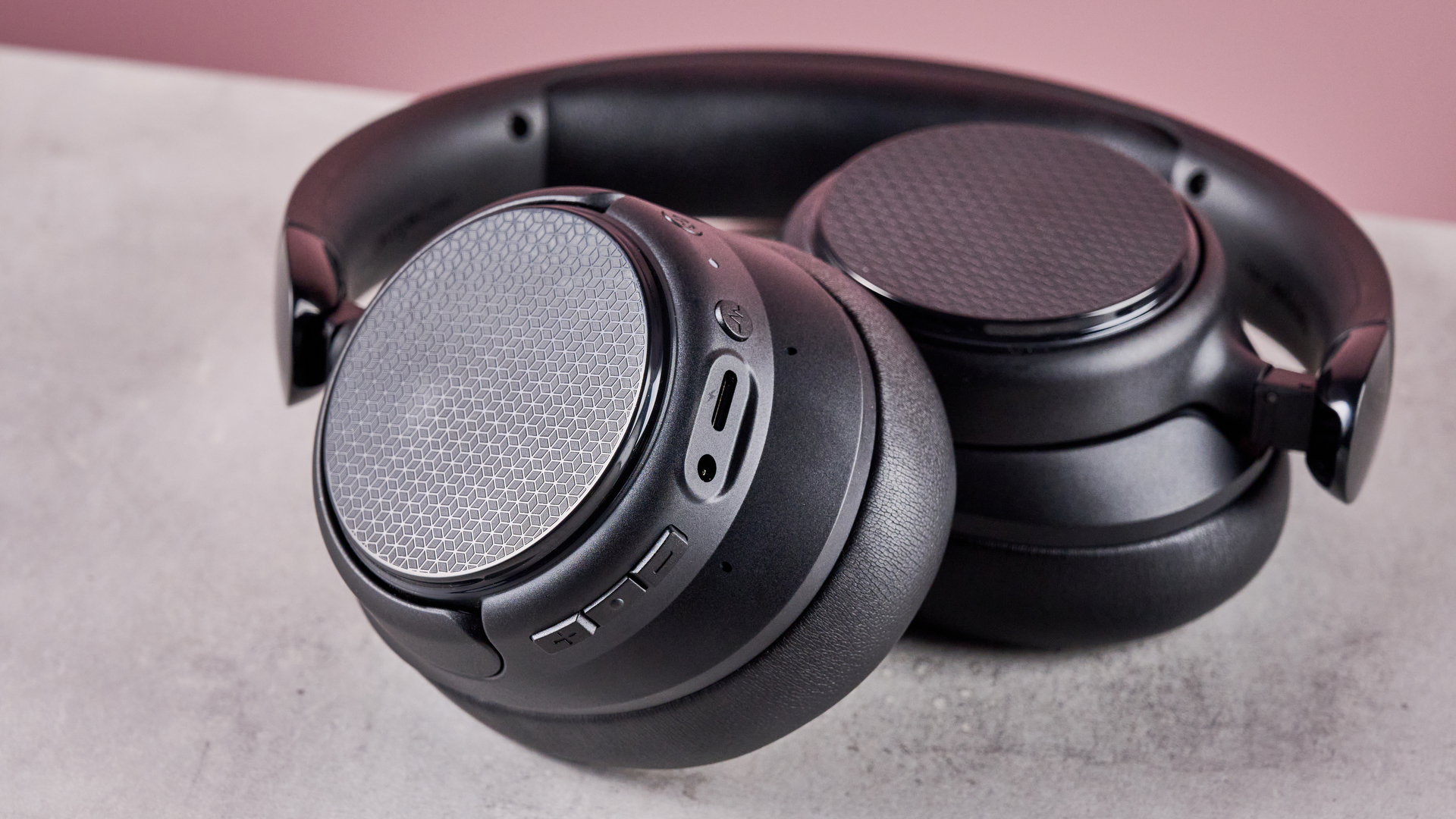
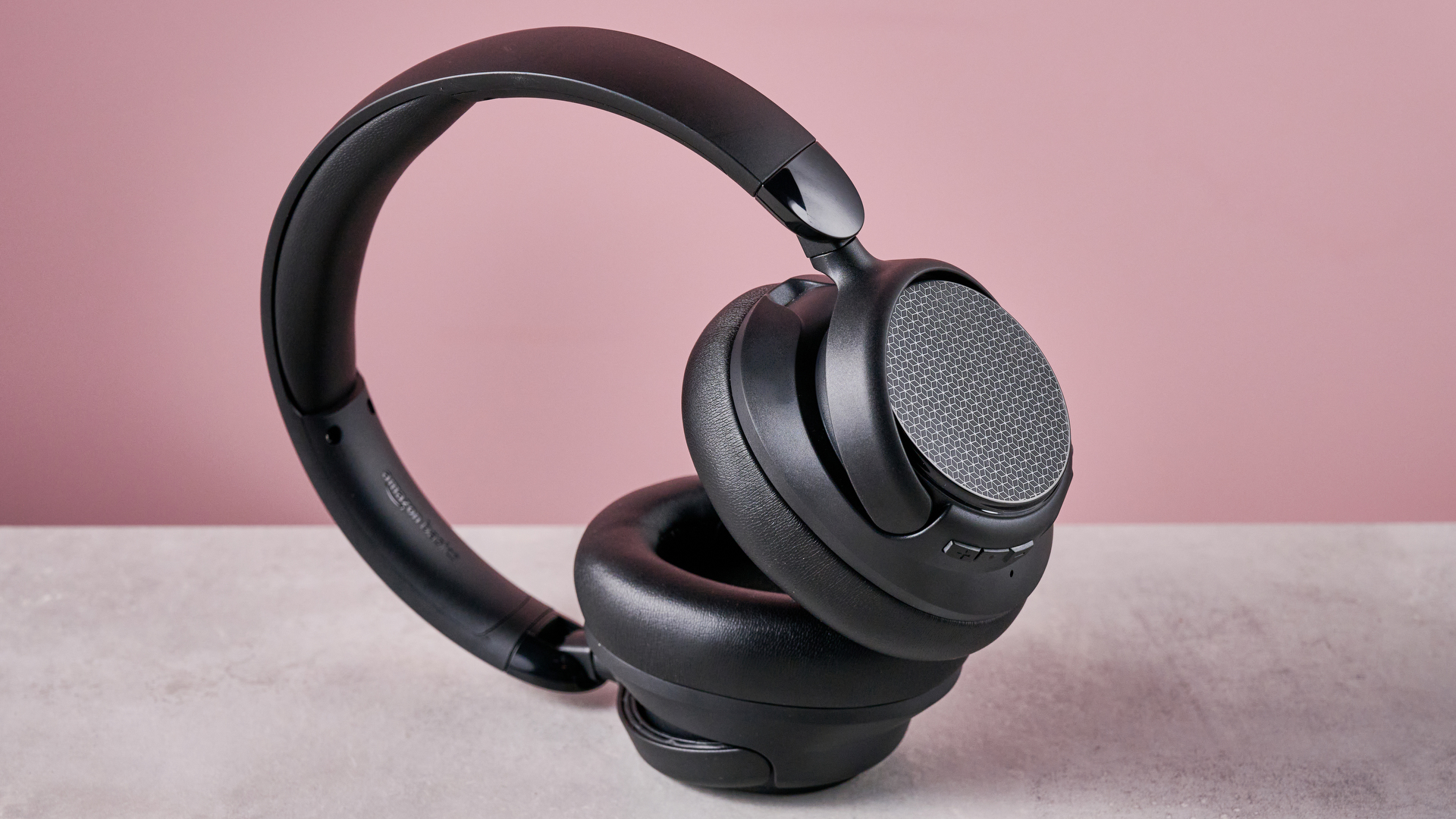
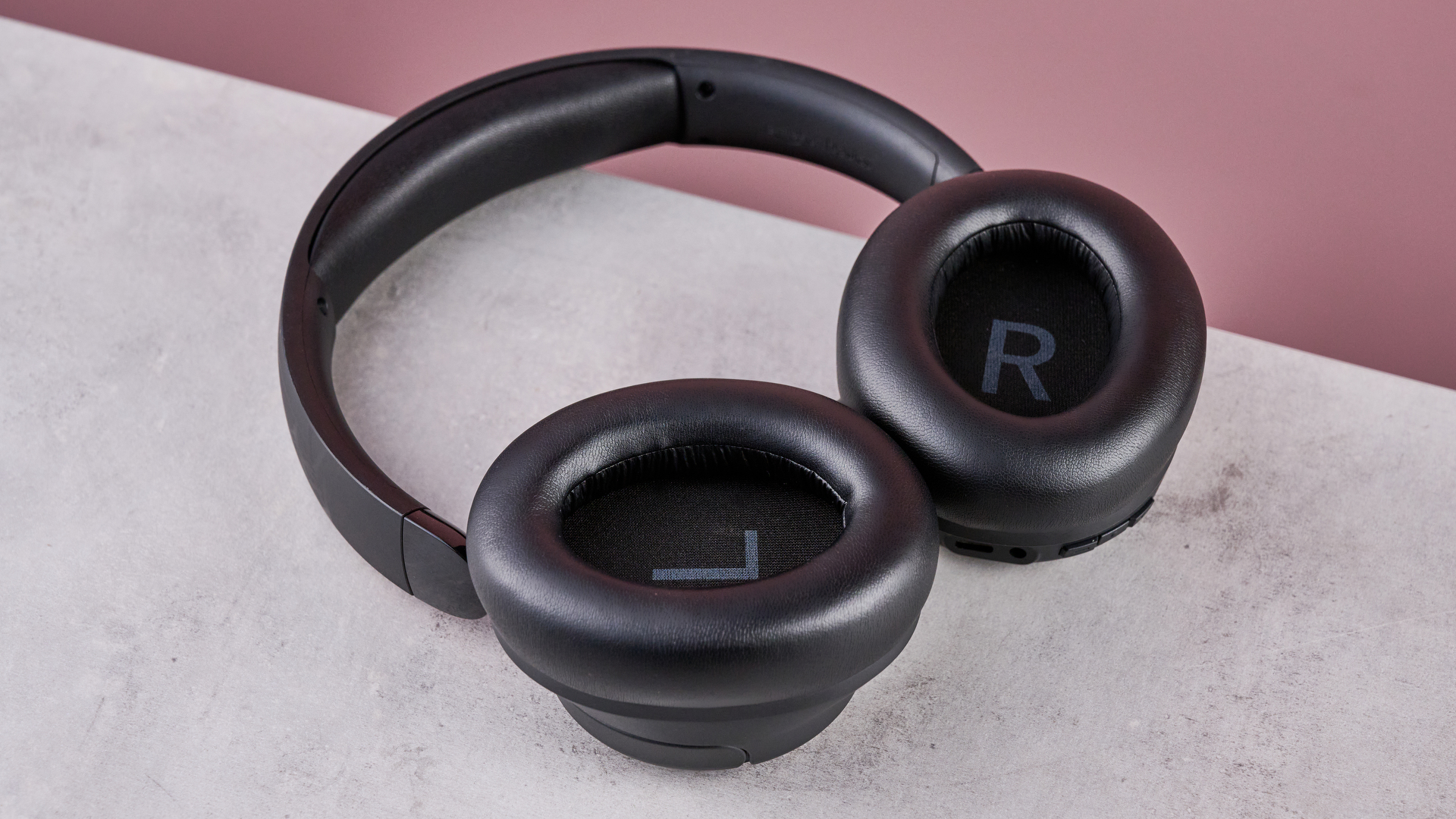

4. Amazon Basics Hybrid Active Noise Cancelling Headphones
Our expert review:
Specifications
Reasons to buy
Reasons to avoid
Amazon's snappily titled Basics Hybrid Active Noise Cancelling Headphones (at least there's no confusion over what you're getting here) were only release in the second half of 2025, so I didn't know what level of quality to expect here at all. It didn't take long for them to impress me.
Obviously, for around $40 / £30 full price, my expectations were pretty low to begin with – but in basically every respect, these make you nod your head and make your 'hey, that's pretty good!' face. You know that one you make.
Build quality is good – it doesn't exceed the likes of the similarly priced Soundcore Q30, here, but they both feel like they basically match the quality of the more-expensive 1More SonoFlow Pro HQ51. The pattern on the earbuds is nicer than pretty much any other cheap headphones (though the Soundcore Q30 has classier buttons).
I'm always happy with headphones that fold small for travel, though these don't come with a protective case, and I found that the headband scuffed very quickly from being carried around in a back with other headphones while I was doing my tests. Not in a way that ruined them, but you can see the effect, so bear that in mind.
They're comfortable to wear – they have more clamping force than the Soundcore Q30 (or 1More SonoFlow Pro), so you feel them a little more, but they're very lightweight, so I didn't find it fatiguing – even as a glasses wearer, they stayed comfortable. They just made the area around my ears a little warmer than other headphones generally do.
When it comes to sound, the balance is impressively good, the soundstage is well-organized, and treble is clean and clear. The latter element stands out because it's admittedly a compressed soundstage overall, as is usually the case with cheaper headphones.
Super-dense musical mixes is one area where you'll hear this limitation – there's generally a loss of precision in detail compared to the 1More Sonoflow, while bass is lightweight in impact and doesn't dig very deep. However, the bass is tightly controlled, and I'll take that as a fair trade off for the price – accuracy over scale.
I can live with all of this – the songs may not sound audiophile, but they do sound correct and pleasing. And with the strong noise cancellation, you can really hear them.
This is another pair of headphones set apart by how well it tackles noise cancellation across all frequencies in the real-world tests in particular. I was especially impressed with how well it handled the noise of a café, where its noise-stopping power was only a tiny bit weaker than not only the 1More SonoFlow HQ51, but also far more expensive headphones such as the Sennheiser Accentum Plus.
Compared to the cheaper headphones I tested – the Soundcore Q20i and Runolim WH301A – the Amazon Basics were a major step up and worth spending the small amount extra. The Q20i were way better at pure noise cancellation than I expected (and very close to the Amazon and Soundcore Q30 overall), but their actual sound quality is so poor that I couldn't recommend them. And the Runolim are just too cheap for their own good – they try, bless them, but choosing them over the Amazon would be a major false economy.
There's not much between these and the Soundcore Q30, but these seem to generally come in a little cheaper, and I marginally preferred their sound balance and noise cancellation skills, especially in the real-world tests.
A noise-cancelling headphones glossary
There's a lot of jargon associated with tech-focused headphones, so it's helpful to understand some of the key terms when you're browsing different options. I've collected some of the most useful and common terms below.
Active noise cancellation (ANC): A technology that reduces unwanted background noise. It works by using external microphones that can measure ambient sounds. The headphones then generate an opposing soundwave (often called ‘anti-noise’) to cancel out the background noise, which is mixed into whatever you're listening to. With ANC, you can listen to your audio at lower volumes and with improved clarity, especially in noisy environments, like on planes or in a busy cafe.
aptX: A Bluetooth audio codec designed for higher-quality streaming. aptX comes in different forms, with aptX Adaptive being the most common in newer headphones. It adjusts sound quality based on the strength of your connection. aptX Lossless delivers top-tier, high-resolution audio. There’s also aptX Voice, which enhances call clarity, especially when you're in noisy surroundings.
Auracast: A new Bluetooth technology that allows for easy, seamless connections without pairing. Auracast enables you to connect your headphones directly to public audio sources, like TVs in bars or announcement systems at airports. Originally developed for hearing aids, it’s expected to become widely supported in upcoming headphone models for its user-friendly approach.
↓ Read more
Bluetooth: The wireless technology used by nearly all modern headphones for connecting to devices. Bluetooth supports various audio streaming technologies, including aptX, LDAC, and LHDC. The most widely supported codecs are SBC and AAC, these are found in most wireless earbuds. Bluetooth versions vary, with higher versions like Bluetooth 5.3 and 5.4 offering improved features such as Bluetooth LE Audio and Auracast. However, not all headphones with newer Bluetooth versions support these advanced features, so always check product specifications.
Bluetooth LE Audio: A next-generation Bluetooth audio standard, known as LC3, designed to deliver higher-quality sound while consuming less power than previous codecs like SBC or AAC. LE Audio is expected to become more widespread, but right now only a few headphones and devices support it.
Dolby Atmos: A 3D audio format used in music and movies that creates immersive, spatial sound. Instead of traditional channel-based audio, Dolby Atmos encodes sounds as objects that can be positioned in a virtual 3D space, delivering a listening experience that feels more real and dynamic.
Drivers: The components responsible for producing sound in headphones, often referred to as mini speakers. Most headphones use dynamic drivers, which function similarly to loudspeakers but are much smaller, from around 20mm up to 50mm in over-ear headphones, like the ones covered here. Audiophile-grade headphones may use planar magnetic drivers, which offer greater precision but tend to be more complex to manufacture and are expensive.
EQ (Equalizer): EQ, short for equalizer, lets you adjust the sound profile of your headphones by boosting or reducing specific frequencies, like bass, mids, and treble. Many modern wireless headphones sync up to an app with preset EQ modes for different genres (like rock, classical, or pop) or manual sliders that allow you to fine-tune the sound yourself. EQs are divided into "bands," with a three-band EQ offering control over bass, midrange, and treble, while a nine-band EQ gives more precise control over a broader frequency range.
In-ear: In-ear headphones, also known as earbuds, have tips that sit snugly in your ear canal. You might also see the term "IEM," or "In-Ear Monitor," which refers to high-quality in-ear headphones often used by professionals. IEMs typically offer excellent noise isolation and are designed to deliver superior sound quality.
Find My: A feature that helps you locate lost headphones through your smartphone. Apple’s version is called Find My and Android users have Find My Device. Some headphones offer their own "find my" feature within their apps, but the built-in phone versions are generally more reliable and easier to use.
Head tracking: An advanced feature in spatial audio-enabled headphones that adds to immersion by detecting head movement. With head tracking, sounds stay in their virtual position, creating the effect of being in a room with speakers, even as you move your head. This technology is used in formats like Dolby Atmos to make the audio experience feel more realistic.
Hi-Res Audio: High-resolution audio (Hi-Res) refers to music files with greater detail and less compression than standard formats, like MP3. These files bring you a more expansive dynamic range and are closer to the original studio recordings. While many headphones are "Hi-Res Certified," this label only ensures they technically meet certain standards, not necessarily high-quality playback. Hi-Res files are larger and typically streamed over Wi-Fi on streaming platforms like Tidal, Qobuz, or Amazon Music HD. Check our our what is Hi-Res Audio guide for a more detailed definition.
LDAC: A high-quality audio streaming codec from Sony. LDAC enables Bluetooth devices to stream music at higher resolutions than standard codecs like SBC. LDAC is supported across Sony products and is compatible with many Android devices and best portable music players.
LHDC: Similar to LDAC, LHDC is another high-resolution Bluetooth streaming codec designed to deliver better sound quality. It competes with LDAC and aptX, and is supported on some Android devices.
Lossless: Lossless music retains all the original audio data from a recording, unlike compressed formats like MP3, which lose some detail to reduce file size. Lossless formats, such as FLAC (used by Tidal) and ALAC (used by Apple Music), offer higher-quality sound but take up more storage space.
Multi-point Bluetooth: Multi-point Bluetooth allows your headphones to connect to two or more devices simultaneously, so you can switch between them without needing to manually disconnect and reconnect. This feature is convenient for multitasking, like taking a call on your phone while staying connected to your laptop.
Noise isolation: The ability for a pair of headphone to block external sounds passively, without electronic processing. In-ear headphones achieve this by fitting snugly into your ear canal (acting a little like earplugs to reduce outside noise.), while over-ear models create a seal around your ears.
Over-ear: Over-ear headphones have large earcups that fully cover your ears, creating a seal for the best noise isolation. This design, especially when combined with active noise cancellation, makes over-ear headphones the best choice for blocking out external sounds and enhancing audio quality.
Snapdragon Sound: A suite of wireless technologies designed to enhance audio quality when both your phone and headphones support it. It combines aptX high-quality streaming with features that reduce Bluetooth latency, improve voice call clarity, and boost connection stability. Snapdragon chips, developed by Qualcomm, power many Android devices. For more details, check out our Snapdragon Sound explainer.
Spatial audio: A broad term for 3D sound technologies that create an immersive listening experience. Apple uses it to describe its integration of Dolby Atmos with head tracking, but other brands also offer similar 3D sound effects using technologies like Dirac Virtuo, DTS. , THX, and Dolby Atmos. The goal is to make audio feel as though it's surrounding you, rather than playing directly in your ears, providing a more cinematic experience, especially when watching movies.
Transparency mode: A feature that blends ambient sounds with your music, allowing you to stay aware of your surroundings without turning off your audio. It’s ideal for hearing announcements, having conversations, or staying alert to traffic. Various brands have different names for this feature, such as 'Aware Mode,' 'HearThru,' or 'Ambient Mode,' but we often refer to it as ‘Transparency mode’ for consistency across our guides and reviews.
USB-C Audio: Some headphones can play high-resolution digital audio via a USB-C cable connection from a phone or computer, offering superior sound quality compared to Bluetooth. For audiophiles, headphones with both wireless capabilities and USB-C audio support are ideal, providing the convenience of wireless listening and the high fidelity of wired playback when desired.
3.5mm jack: A standard wired connection for headphones, often found in traditional devices. Not all modern wireless headphones include a 3.5mm jack, so it’s an essential feature to look out for if you prefer or need a wired connection.
FAQs about noise cancelling headphones
What is active noise cancellation?
• Active noise cancellation involves creation of an antiphase soundwave
• This signal counteracts and 'cancels out' the external noise you hear
• It is created using mics on (and in) your headphones alongside a software algorithm
Noise-cancelling headphones use both analog and electronic methods to block out the environmental sound around you, allowing you to listen to your music in peace without distraction.
Active noise cancellation technology was originally implemented in a product (a headset for pilots) by Bose over 30 years ago, and the company has remained synonymous with it since. We asked John Rule, Senior Engineer at Bose Corporation, to explain noise cancellation.
"Today, noise cancellation in the majority of headphones and earbuds is achieved through a combination of both active and passive technologies. For active noise reduction, sophisticated electronics work with microphones both inside and outside the ear cups to sense the sound around you and then measure, compare, and react – instant by instant – to produce an opposing cancellation signal," says Rule.
Because noise is just a signal, it's possible for ANC headphones to analyze the unwanted sound around you, and create an opposite version of that signal, which is then added into the music using clever processing. If done well, this will cancel out those unwanted extra sounds, but leave your music sounding just like you expect it to.
Bose's John Rule emphasizes that it's not just the circuitry doing the work, though. He says, "Passive noise reduction also plays a role in headphone performance. When you place an earcup over your ear or an earbud in your ear, some noise is physically blocked. The cup or bud design, materials used, clamping force of the headband, shape of the ear tips, and many other factors contribute to a comfortable fit while providing a good seal against incoming noise. When active and passive elements are combined, the result is cancellation of the noise you don’t want to hear, such as a plane engine or annoying vacuum. This lets you hear what you want, whether that’s your music or silence."
Are premium noise cancelling headphones worth it?
• Noise cancellation can be clearly more effective in more premium headphones, but there are diminishing returns
• Spending more doesn't automatically mean better noise cancellation – it depends on the brand
• Sound quality tends to be where premium noise-cancelling headphones shine consistently
As with most tech products, you'll get more from your noise cancelling headphones if you pay more, but the more premium you go, the smaller the differences will become.
At the cheaper end, spending more makes a huge difference in all ways – build quality, noise cancellation power, sound quality – but then the differences will start to plateau once you get above $100 or so.
As you go from $200 up to the $400 that the premium headphones cost, I've found that the element that most reliably improves is the sound quality. Finer detail, richer bass, a more expressive and broad soundstage – the noise cancellation quality improves slightly, but the sound quality can be a clear jump up.
However, it's important to note here that spending more doesn't automatically mean the noise cancellation will be better. Bose, Sony, Apple and Sonos are real leaders in active noise cancellation, and their premium headphones are broadly worth the price hike for improved noise-stopping power. However, Bowers & Wilkins, Bang & Olufsen, Dali and more hi-fi companies make high-priced headphones that sound amazing, but don't have as strong noise cancellation.
I've flagged the Bose QuietComfort Headphones as offering noise cancellation that's basically as good as headphones that cost $100-$200 more – those other headphones sound better and look nicer, but there's limited improvement to the ANC.
Similarly, the $90 1More SonoFlow Pro HQ51 are effectively as good as noise cancellation gets until you spend over $200 – but again, you can get headphones with better audio fidelity if you spend more.
What are the best headphones for commuting?
• Best over $300 / £300: Bose QuietComfort Ultra Headphones
• Best under $250 / £250: Bose QuietComfort Headphones
• Best under $100 / £100: 1More SonoFlow Pro Headphones
All the headphones I've picked are great for commutes, and will deal well with engine and transportation noise.
They're all lightweight and comfortable, and they also all fold down, and come with protective carry cases, so you can throw them in your bag without them taking up too much space, and without them risking any damage.
There are other great options too: Sony's headphones are excellent for commuting, and AirPods Max are popular with iPhone users (naturally) for their easy connectivity with Apple devices.
What are best headphones for call quality in noisy environments
• Noise cancellation for your voice is less effective than for blocking outside sounds to your ears
• A microphone close to your mouth will always be the best way to be heard clearly
• The Sony WH-1000XM6 have the best call quality of standard noise-cancelling headphones
Based on testing these headphones, easily the best option for calls is the Sony WH-1000XM6, thanks to using a higher number of microphones to pick up your voice, and especially good tech for reducing background sounds while keeping your voice clear. It's a clear front-runner for this particular use.
However, all of these headphones (including the Sony) have microphones near your ears trying to pick up your voice. If call clarity is super-important, the microphone needs to be near your mouth, so you may want to look at the best wireless gaming headsets, which can often be used as regular headphones too, and can include active noise cancellation.
It's harder for headphones to cancel noise around your voice that's being transmitted to other people than it is for them to cancel outside sounds when you're listening to something. For a start, the earpads on the headphones reduce sound a lot to start with, so the noise cancellation processing gets some help there. Secondly, the sound it's trying to block is totally separate to the sound it's playing in your ears.
With your voice, the outside microphones are picking up both ambient sound around you as well as your voice all together, so they need to try to separate the two and reduce ambient sound without making your voice unclear. Cheap models either let in all the sound around you, so you're hard to make out from the rest of the din, or they make your voice sound robotic because they can't affect the ambient sound without also affecting your speech.
The Sony WH-1000XM6 maintain your voice better than any other traditional wireless headphones we've used to date.
What are the best headphones for studying?
• Best over $300 / £300: Bose QuietComfort Ultra Headphones
• Best under $250 / £250: Bose QuietComfort Headphones
• Best under $100 / £100: 1More SonoFlow Pro Headphones
There's nothing about studying that makes it different to other uses for noise-cancelling headphones – ultimately, you want quiet and comfort for a good price, and the headphones I've picked will all deliver that.
However, there doesn't tend to be quite as many loud noises if you're in a studying-friendly location, so you could choose to go with something that offers richer audio fidelity in exchange for slightly weaker noise cancellation – such as the Cambridge Audio P100 SE over the Bose QuietComfort Headphones, or the Audio-Technica ATH-S300BT over the 1More SonoFlow Pro.
I'd still recommend the models above overall, though, because they'll also be the most effective when you're commuting to class.
What kind of speakers do noise cancelling headphones use?
• Wireless noise-cancelling headphones use dynamic drivers
• These use a magnet, a voice coil and a cone-shaped diaphragm/drive unit
• Other general headphone driver types include planar magnetic, electrostatic and solid-state MEMS
Every pair of headphones here uses a speaker tech called 'dynamic' drivers to recreate sound, and this is by far the most common option for all headphones, earbuds and loudpseakers. It's the classic cone-shaped design you might be familiar with from bigger speakers, but in these headphones the drivers tend to be between 30mm and 40mm in diameter.
To explain how these dynamic speakers work, and what it is that makes them so popular with manufacturers, I spoke to Andy Kerr, Director of Product Marketing and Communications at Bowers & Wilkins, which has been creating these types of drivers for headphones and speakers for over 60 years.
“Dynamic drivers use a magnet, a voice coil (typically made from winds of copper wire wound around a circular form), and a diaphragm/drive unit (a thin cone of material that makes the sound). The narrow end of the diaphragm's cone is attached to the voice coil; the wide end of the diaphragm is held in place by a rubber surround, also called ‘suspension’. When electrical current is supplied to the voice coil, it becomes electromagnetic. This creates a push-pull interaction between the coil and the magnet, which it is coiled around, causing the coil to move up and down over the magnet rapidly. Since the coil is attached to the bottom of the drive unit, its movement pushes the drive unit up and down in response, creating sound pressure waves that your ears and brain translate into sound,” explains Kerr.
“A single dynamic driver can be made very compact, is light, and is highly efficient in terms of battery life, which is of course hugely relevant in the age of wireless earbuds. Dynamic drivers are also very popular in headphone designs essentially because they give companies like Bowers & Wilkins a way to use our knowledge and experience from designing and manufacturing them – for both loudspeakers and headphones – while customizing and continually improving the technology over time. For example, our approach to drive unit design combines stiffness in the material (for accuracy and fast response) plus good excursion (meaning how far the diaphragm is capable of moving, for deeper bass performance) that's equally important for both earbuds and loudspeakers."
For noise-cancelling over-ear headphones, dynamic drivers are effectively the only option for the speaker tech. While alternatives exist ('planar magnetic' and 'electrostatic' headphones drivers, for example, while 'solid-state' earbuds are also arriving), these are not generally used for ANC headphones, so dynamic driver tech powers everything in this list.
Latest updates to the best noise cancelling headphones
November 12, 2025
Completely rewrote this guide from scratch, retesting the best options at different price points using a new system of consistent real-world noise-cancellation tests.
October 11, 2025
Made some big structural changes to this design, including moving the Sony WH-1000XM6 into our 'best overall' spot. Made the the Bose QCU Headphone our 'best premium' pick. Put the Sony WH-1000XM4 into our 'best mid-range' spot, the Dali iO8 to 'best for design' and made the new B&W PX8 S2 'best for audiophiles'. Moved the Sony WH-CH720 and B&W Px7 S3 that were in the guide down to the 'also consider' section.
Read more updates
August 21, 2025
Refreshed the introduction to emphasize our rigorous testing standards and experience. Added a new main image. Tweaked the Cambridge Melomania P100 entry to mention the launch of the SE version. Added the Happy Plugs Play Pro, Focal Bathys MG and the Nothing Headphone (1) to our ‘Also consider’ section. Deleted the ‘Coming soon’ tab. Added 'Buy them if/Don't buy them if' tabs to each of the long entries to give readers a quick look at whether a product recommendation is right for them.
June 30, 2025
Checked all products against our latest reviews, and refreshed multiple entries based on updated features and software they've received. Added several new entries to the list of other headphones we've tested, including the JBL Tour One M3.
May 20, 2025
Replaced the Bose QuietComfort Ultra Headphones with the Sony WH-1000XM6 as our top premium option based on recent testing and comparison of the two headphones. The Bose are now our 'Best for Bose fans' pick, for the die-hards.
April 24, 2025
Refreshed the introduction. Switched the older Bowers & Wilkins PX8 for the newer Bowers & Wilkins PX7 S3 as our 'best-looking' pick, based on our recent testing. Added the JBL Tour ONE M3 in our 'coming soon' round-up.
March 28, 2025
Refreshed the introduction. Switched the 1More Sonoflow for the recently-reviewed 1More Sonoflow Pro HQ51 as our 'best budget' pick. Added a brand new section called 'coming soon' to showcase all of the best ANC headphones landing imminently. Added a bunch of new products here, including the upcoming Sony WH-1000XM6s.
February 27, 2025
Rewrote the introduction. Added the Bose QuietComfort Headphones and the Panasonic RB-M600, to our 'also consider' section. Put score cards under each entry so that readers can quickly see which of the recommendations might suit them best.
January 31, 2025
Rewrote the introduction. Added the Bose QuietComfort Headphones to our 'also consider' section and mentioned them in the Bose QuietComfort Ultra Headphones entry as a cheaper alternative. Checked the whole guide for any info that needs updating.
January 2, 2025
Refreshed the introduction. Added the Beyerdynamic Aventho 300 as our 'best for EQ tweaks with ANC' pick, based on our recent testing. Included the newly-reviewed OneOdio Focus A5 in our 'other ANC headphones to consider' section. Added new bios for members of the audio team.
December 3, 2024
Removed all reference to Black Friday. Added context to Sony WH-1000XM4, refreshed the intro, added information of planar magnetic headphones and other designs in the FAQs.
November 8, 2024
Refreshed the introduction. Added extra images to each entry so readers get a better view of the devices. Added new entries to our 'also consider' section, including the Noble FoKus Apollo. Included a new 'meet the team' section so readers can see the knowledge and expertise of the reviews team.
October 11, 2024
Added the Dali iO-8 in place of the Focal Bathys to reflect our newest choice for high-end headphones. Updated the guide with our new glossary.
September 12, 2024
Rewrote the introduction. Added several recently reviewed headphones to our 'also consider' section, including the Dyson OnTrac and Final D7000.
August 16, 2024
Rewrote the introduction. Switched the Sennheiser Momentum 4 Wireless for the Cambridge Audio Melomania P100 as our ‘best noise-cancelling headphones for battery life’ option based on our testing. Added the recently reviewed Edifier Stax Spirit S5 and Creative Zen Hybrid SXFI to our ‘also consider’ section. Itemised our 'how we test' section.
July 17, 2024
Added the Sonos Ace as the best option for movies with spatial audio, based on our testing against the other headphones here.
May 23, 2024
Refreshed the intro to reflect current products and added more recently-reviewed models (commenting on why they aren't featured in the main roundup) to our 'Also Consider' section.
May 1, 2024
Checked all products against our latest reviews, and added new products in our Also Consider section.
March 28, 2024
Added a new 'Also consider' section covering recently reviewed products that haven't made it into this list, explaining why.
March 4, 2024
Added the Sennheiser Accentum Plus as the best option for a tighter fit (or smaller heads).
January 30, 2024
Added the Bose QuietComfort Ultra Headphones as the best premium option, and removed the Bose Noise Cancelling Headphones 700 given current prices and availability.
January 2, 2024
Updated the information in the guide for 2024.
November 20, 2023
Checked all entries against latest reviews, and added information about Black Friday deals.
October 13, 2023
Added a new quick menu to make it easier to see the list at a glance and introduced other formatting elements such as a navigation bar and a new lead image.

Becky became Audio Editor at TechRadar in 2024, but joined the team in 2022 as Senior Staff Writer, focusing on all things hi-fi. Before this, she spent three years at What Hi-Fi? testing and reviewing everything from wallet-friendly wireless earbuds to huge high-end sound systems. Prior to gaining her MA in Journalism in 2018, Becky freelanced as an arts critic alongside a 22-year career as a professional dancer and aerialist – any love of dance starts with a love of music. Becky has previously contributed to Stuff, FourFourTwo and The Stage. When not writing, she can still be found throwing shapes in a dance studio, these days with varying degrees of success.